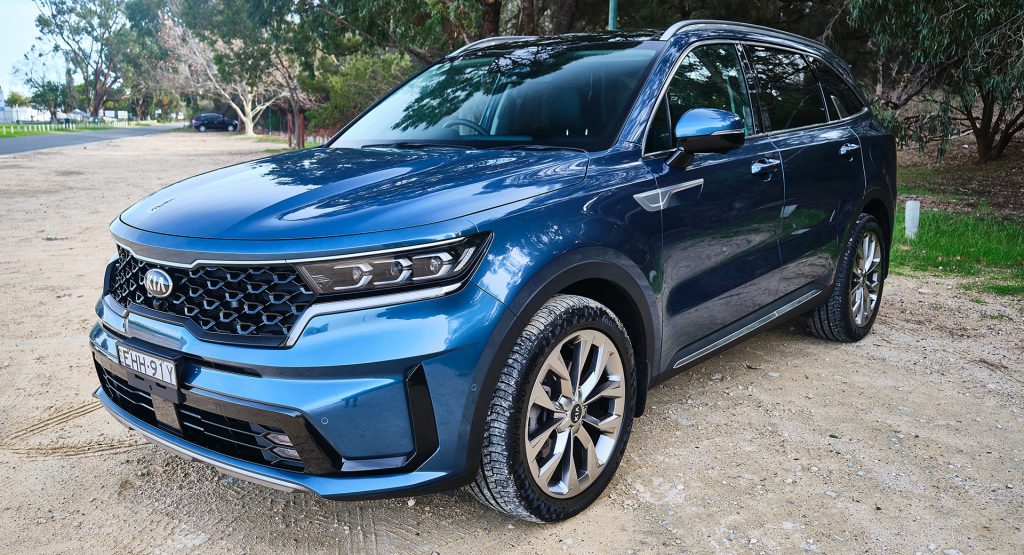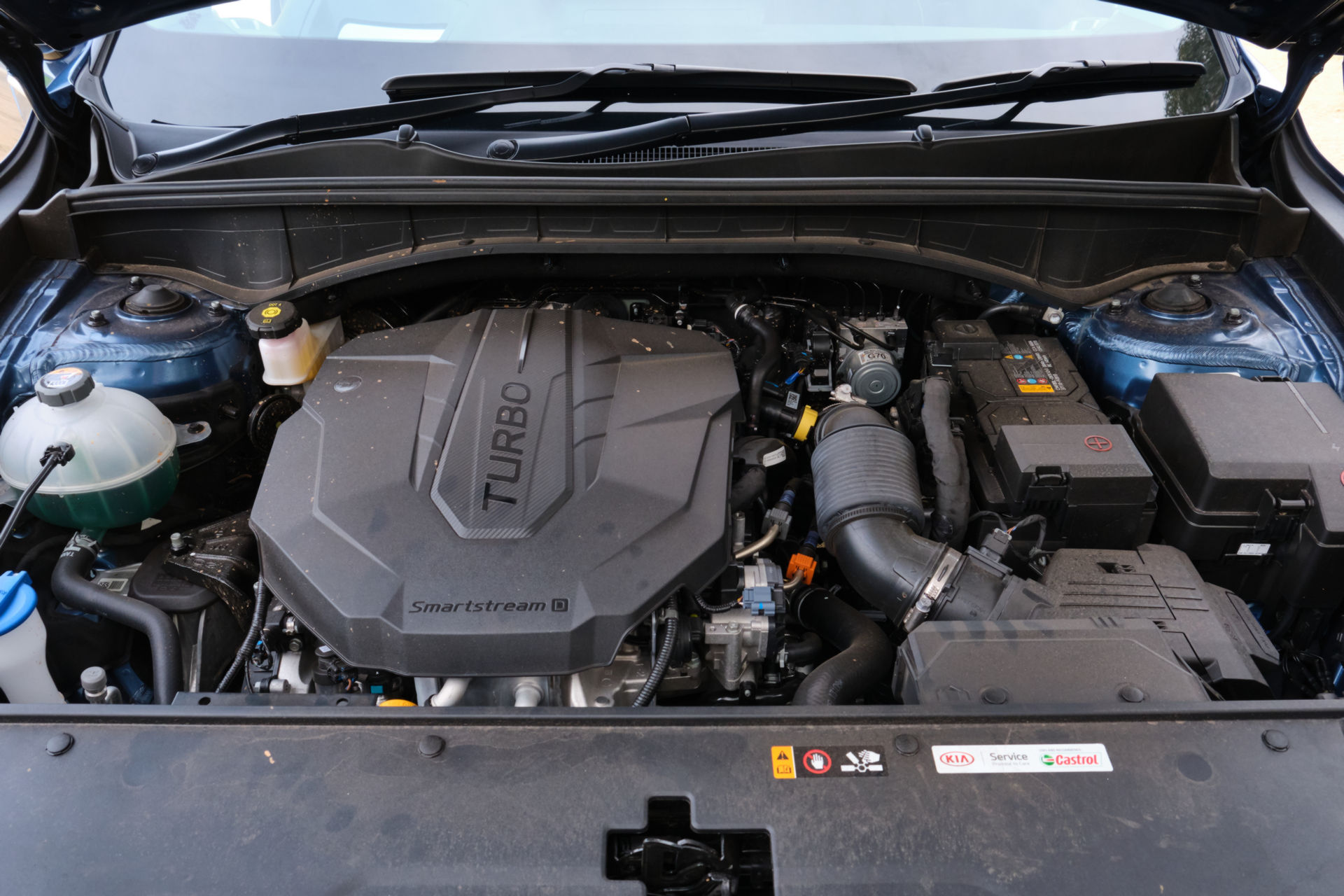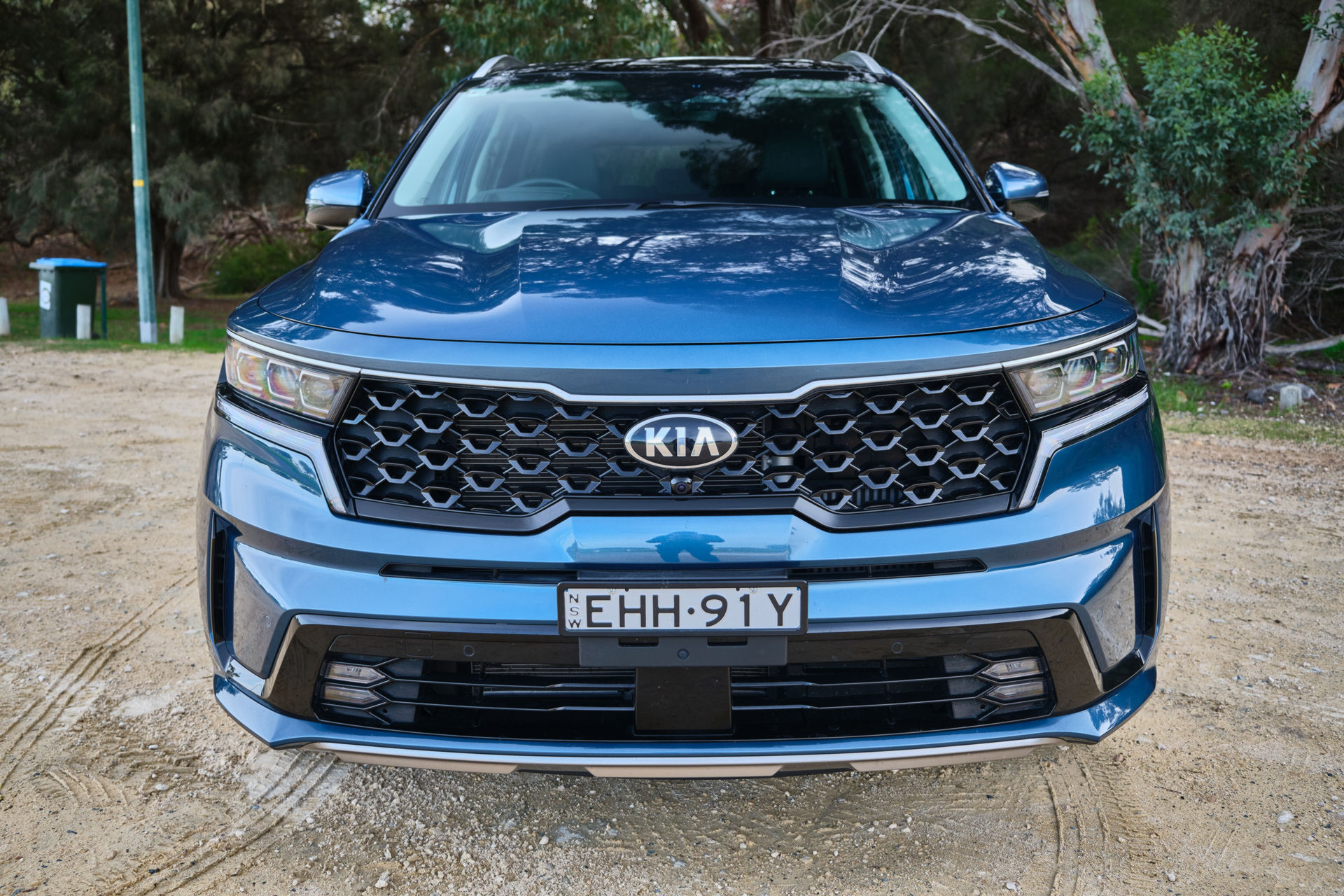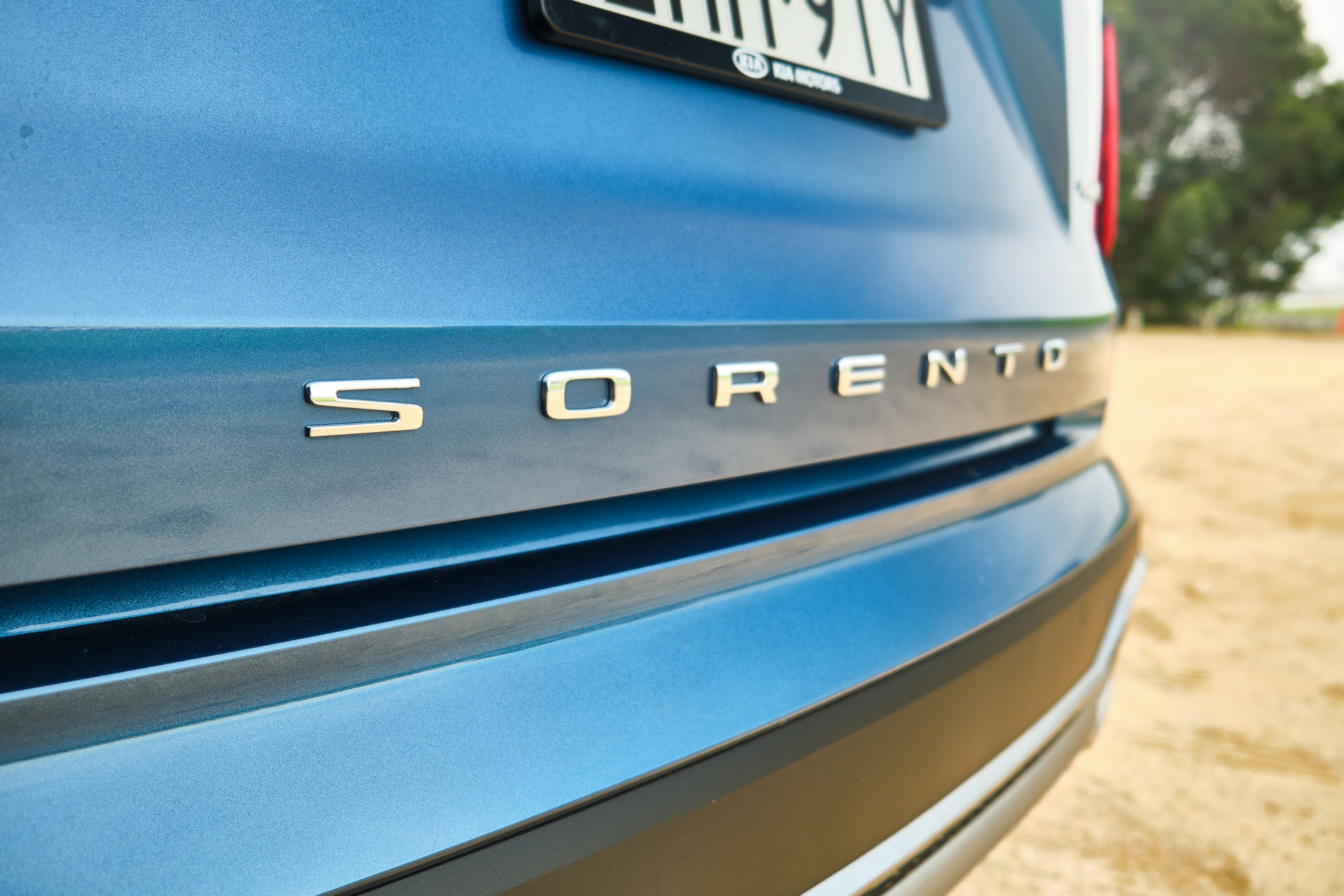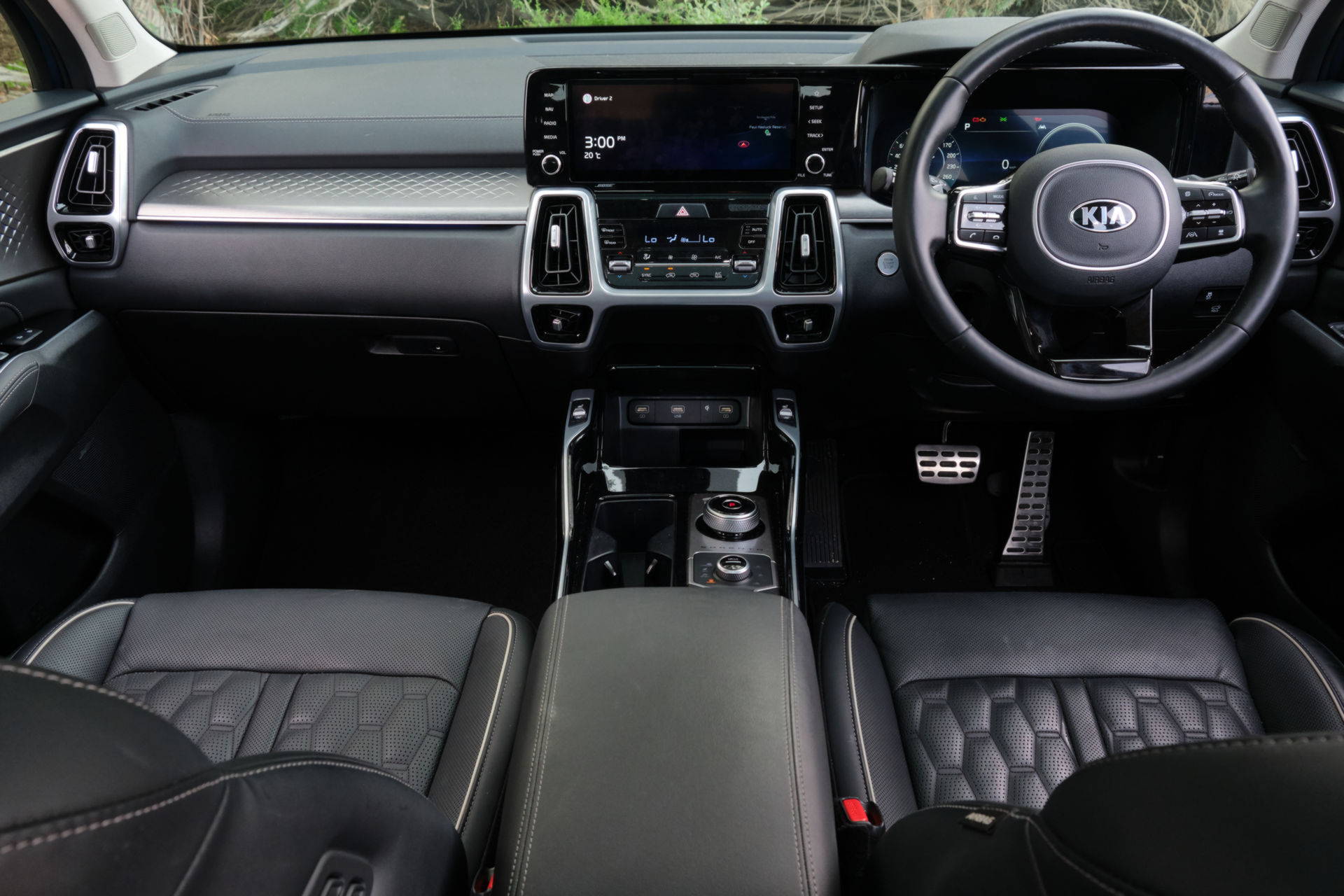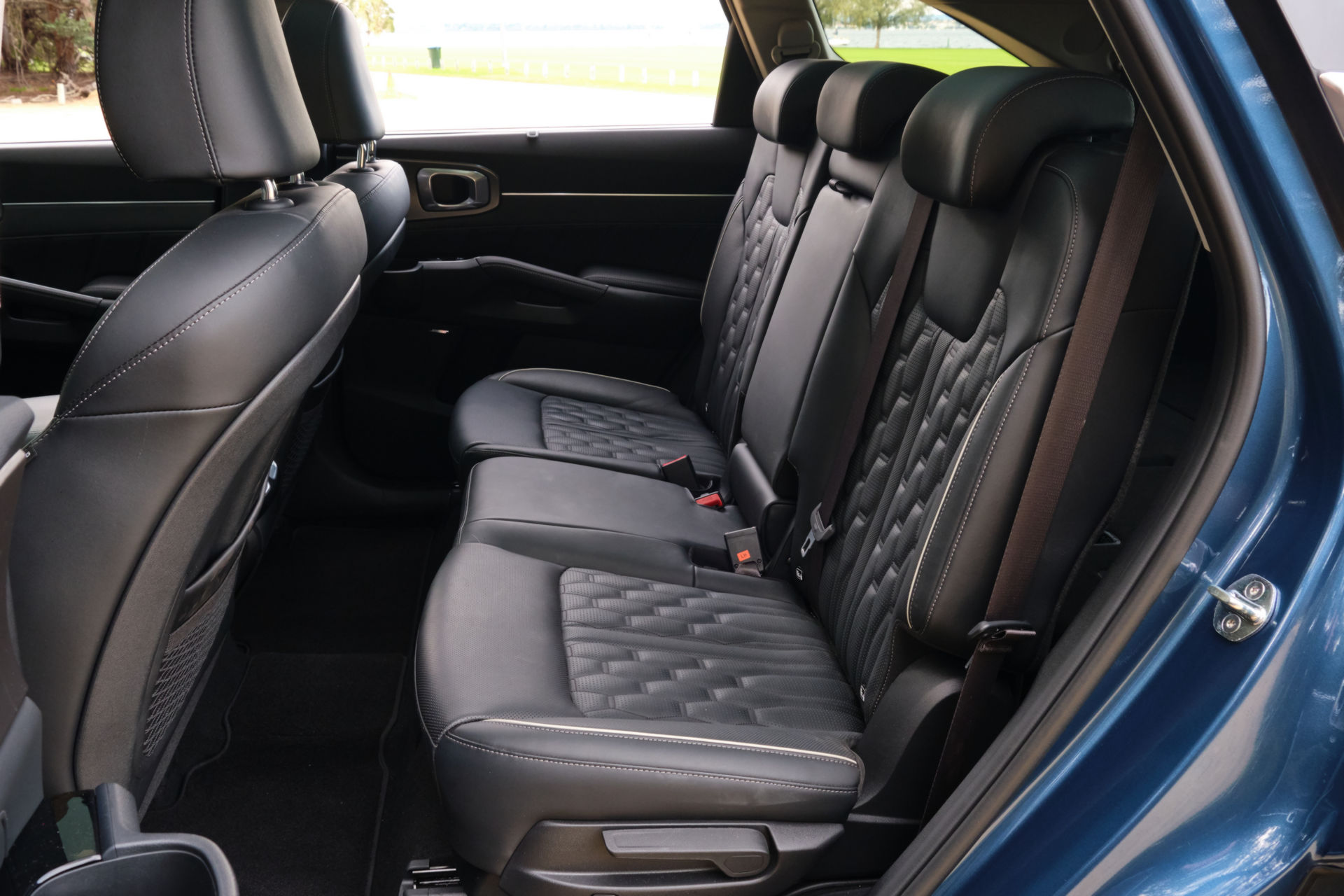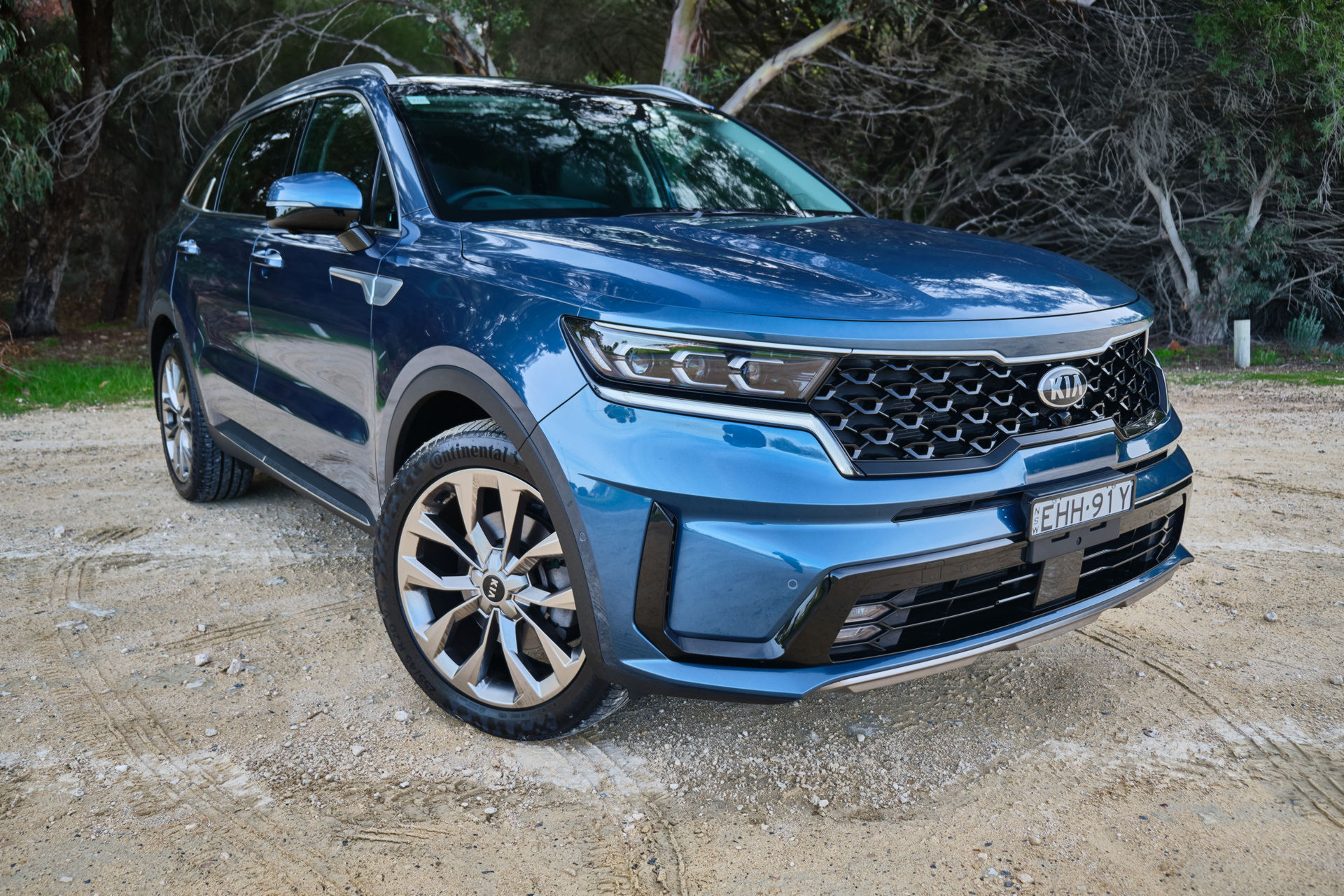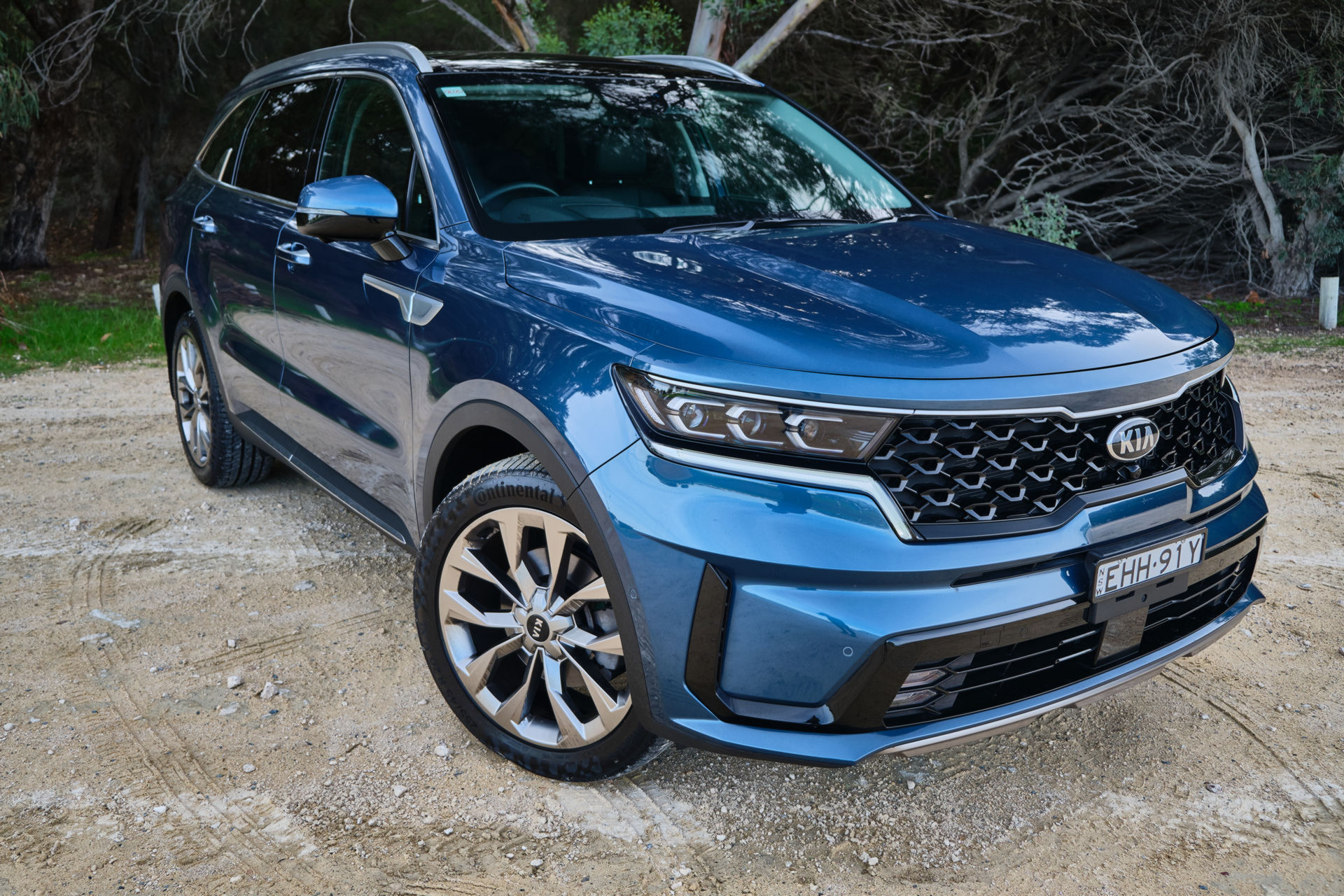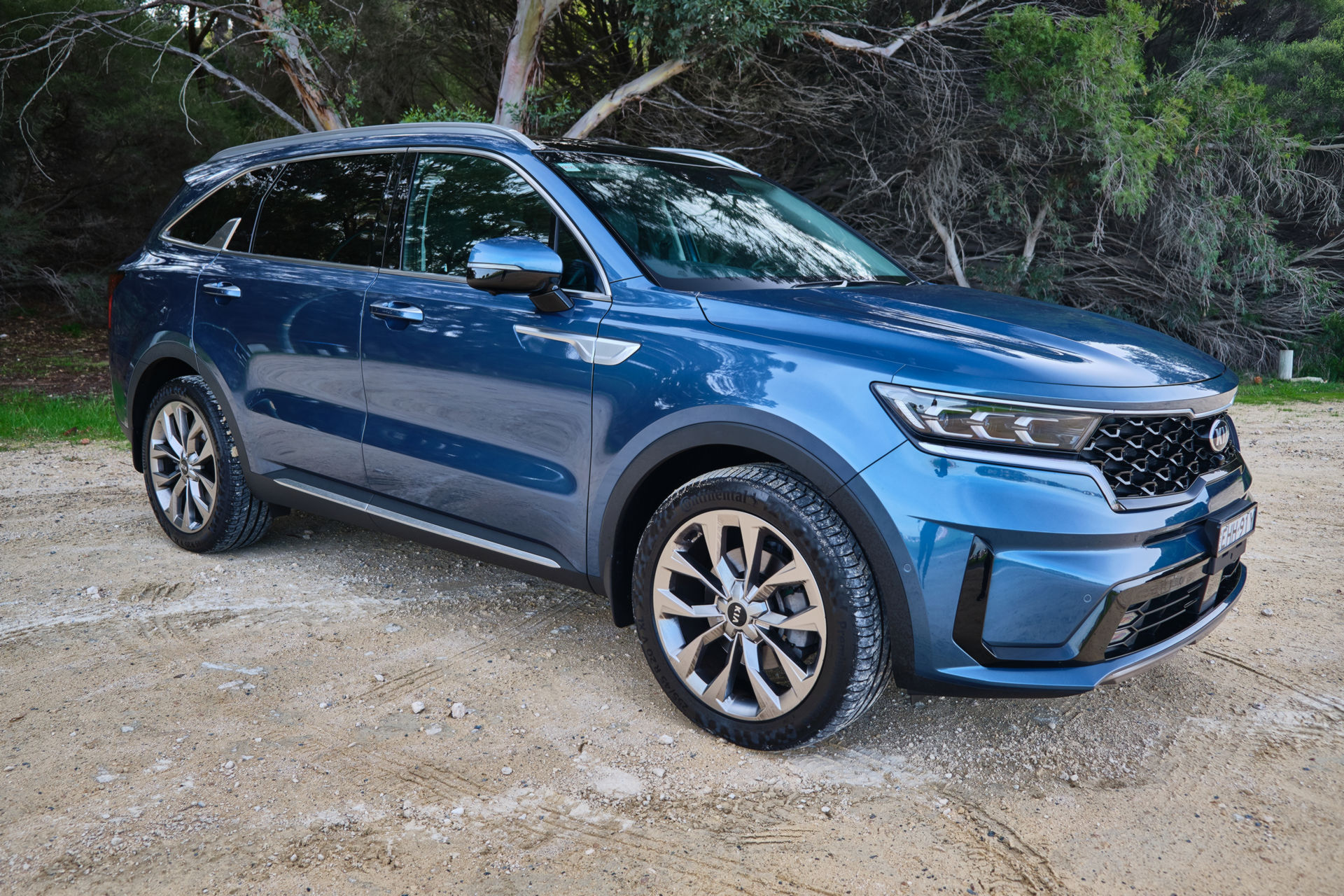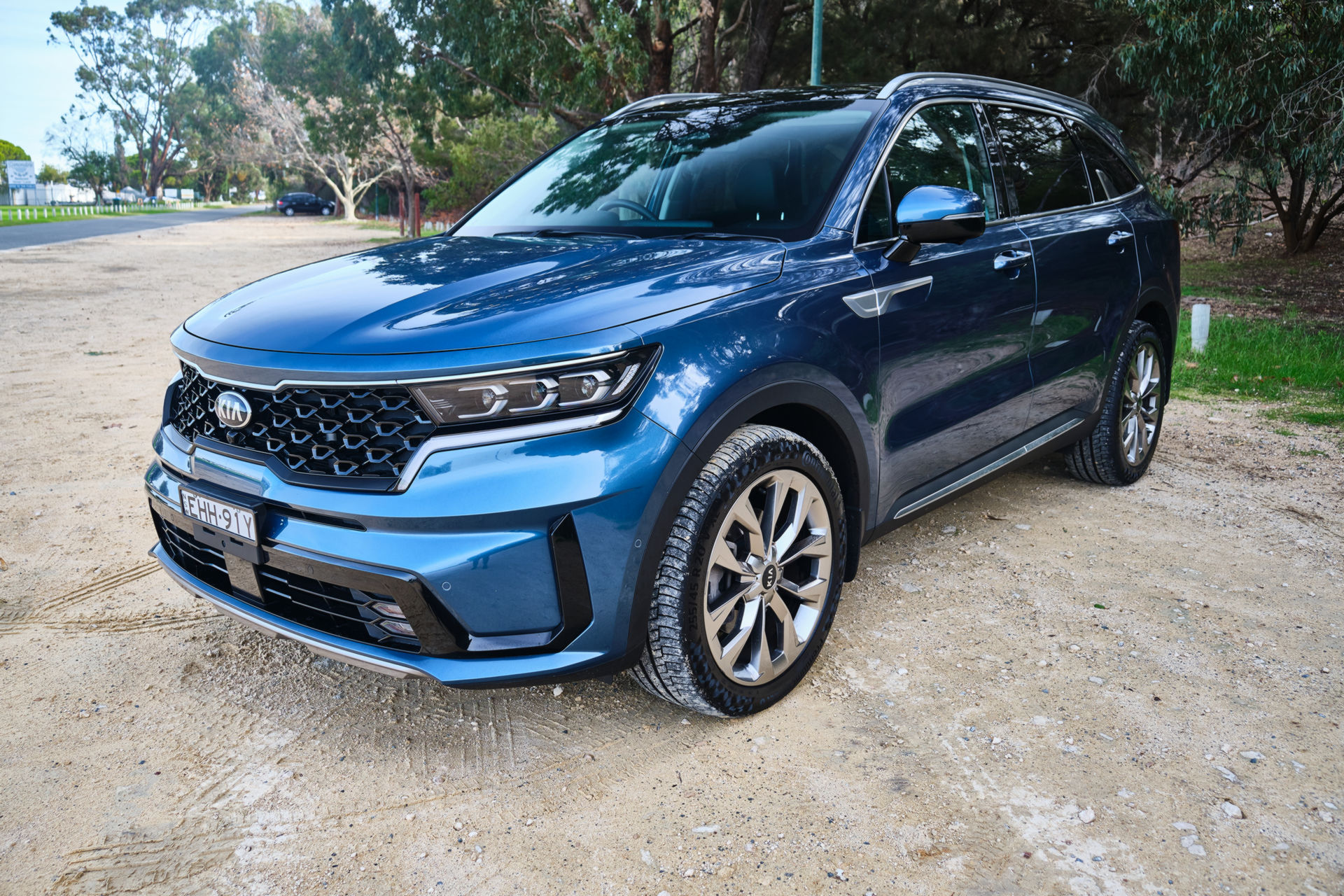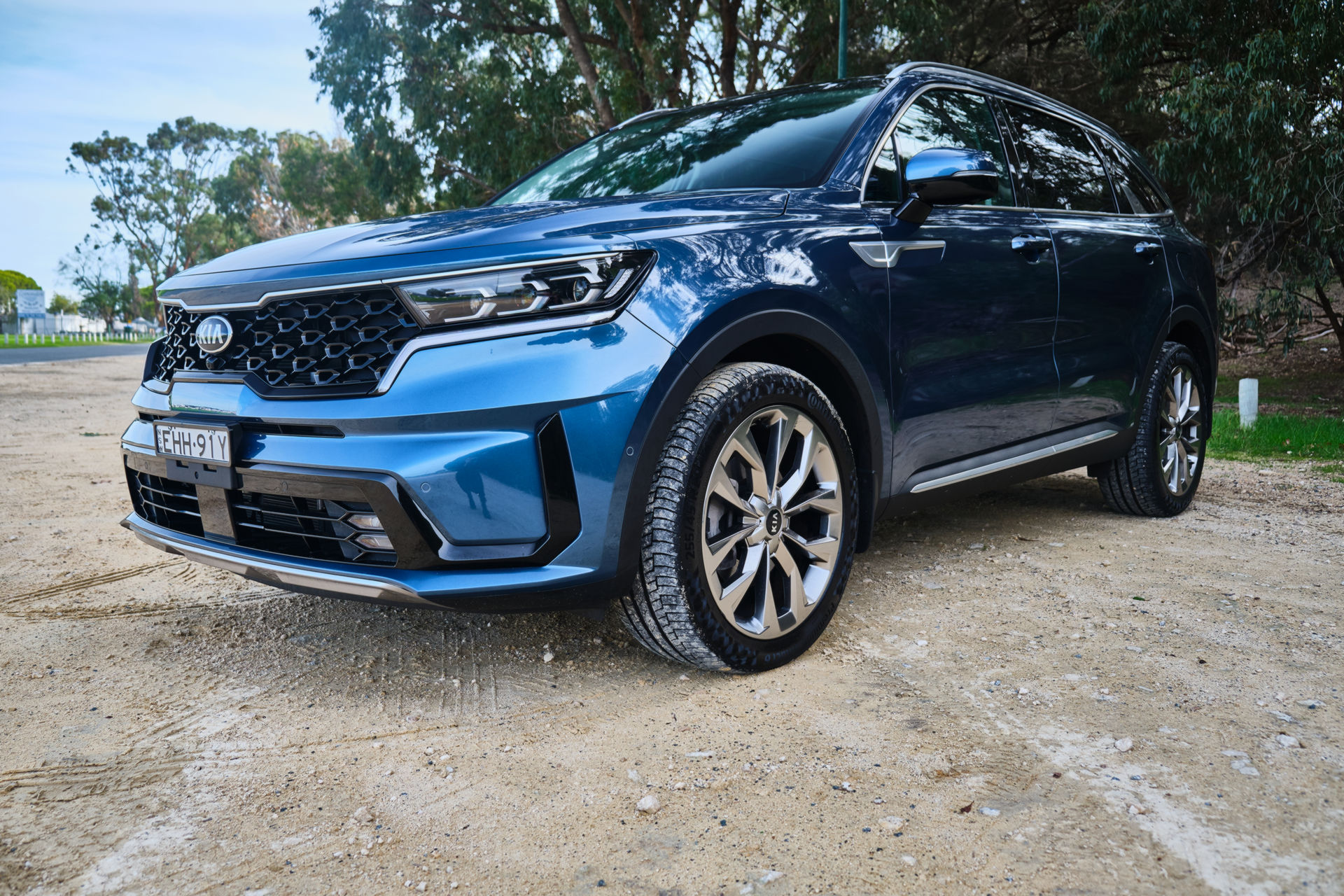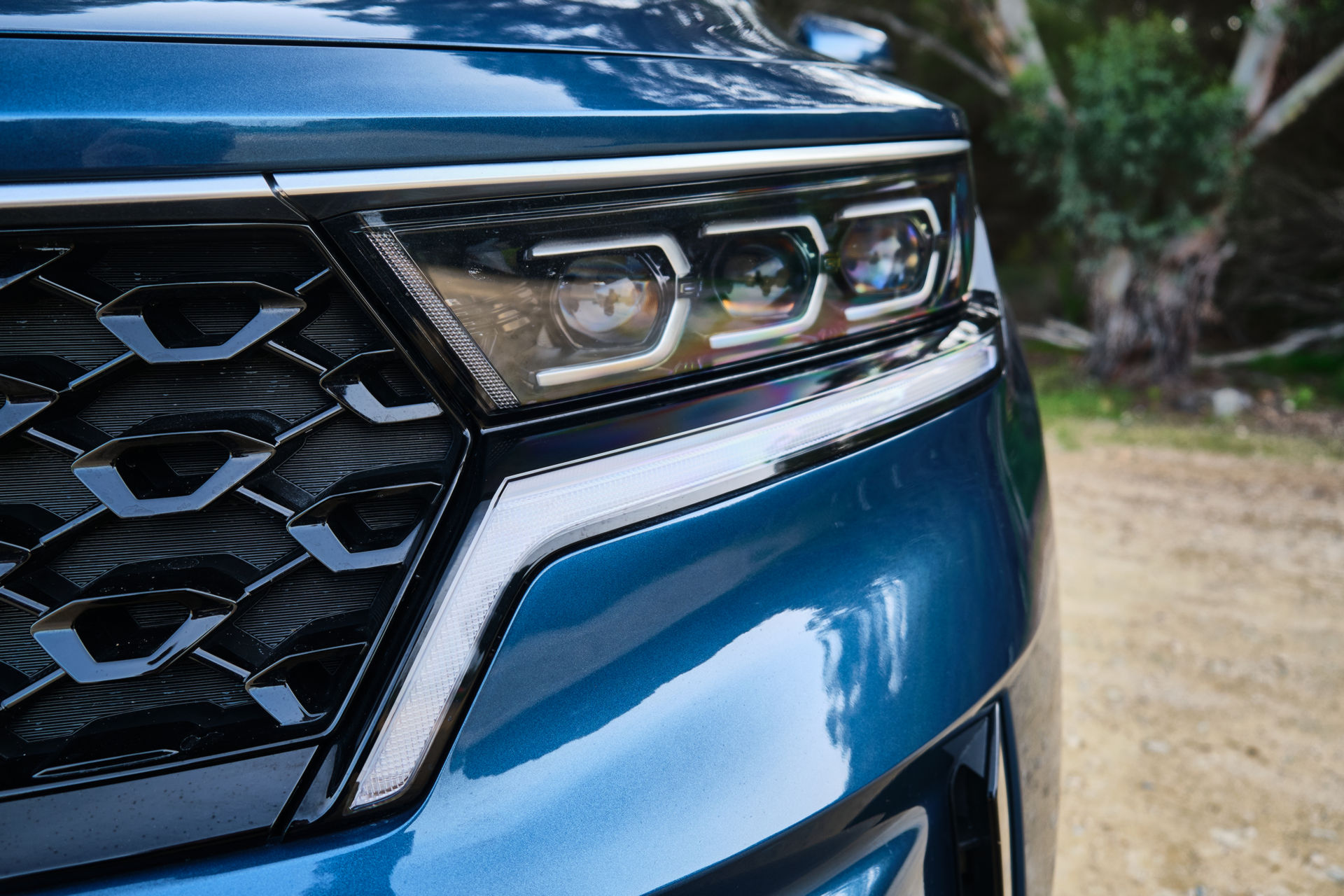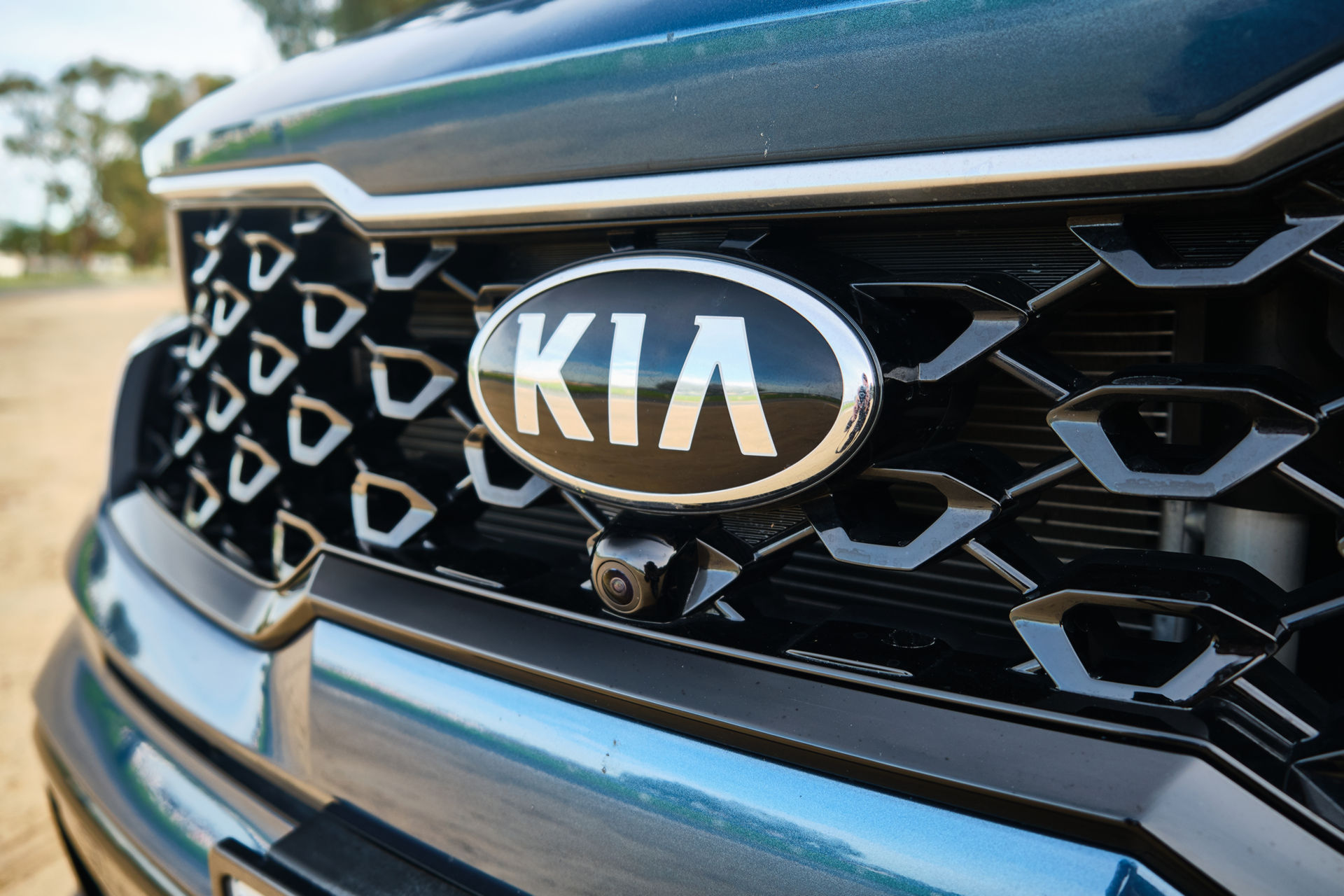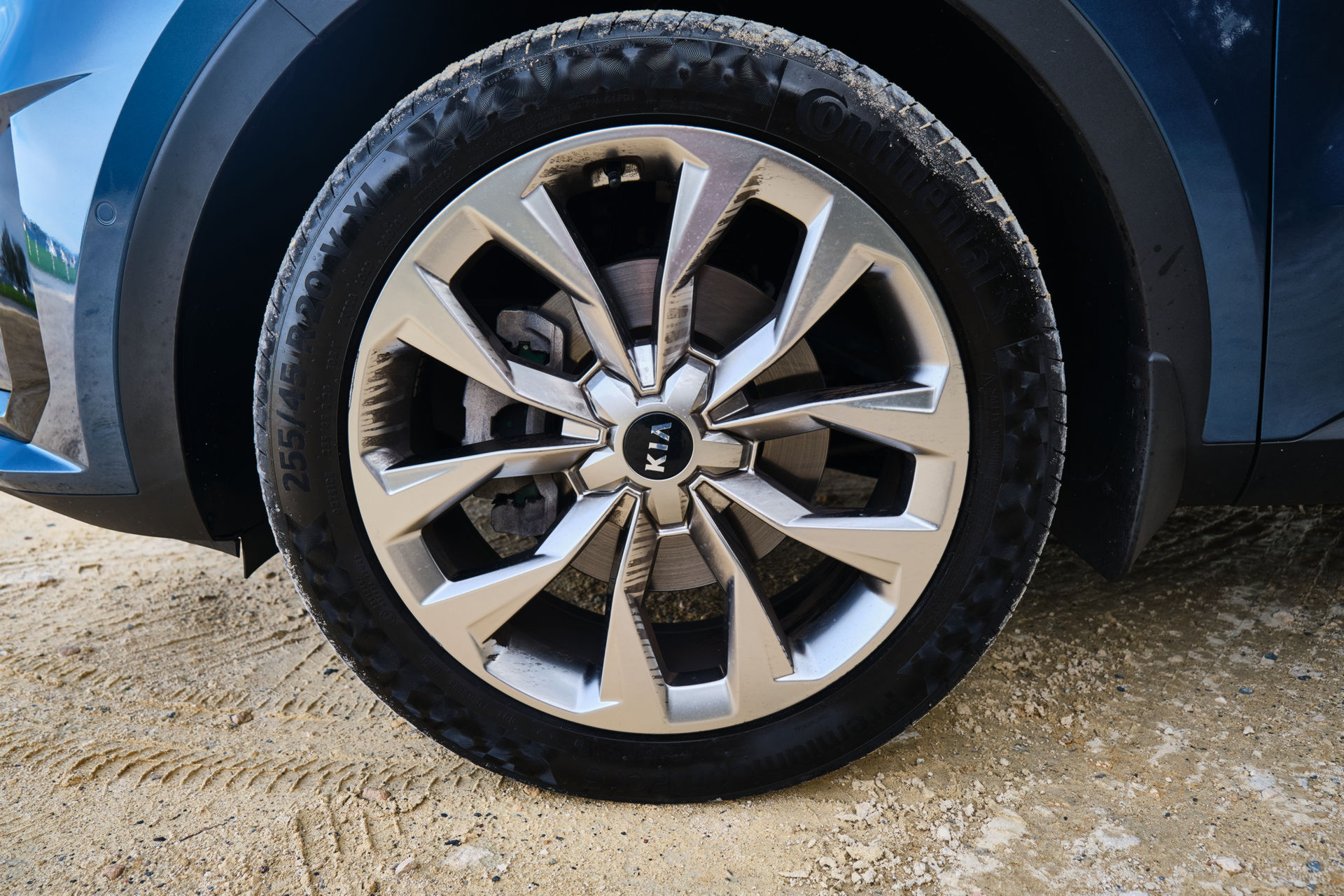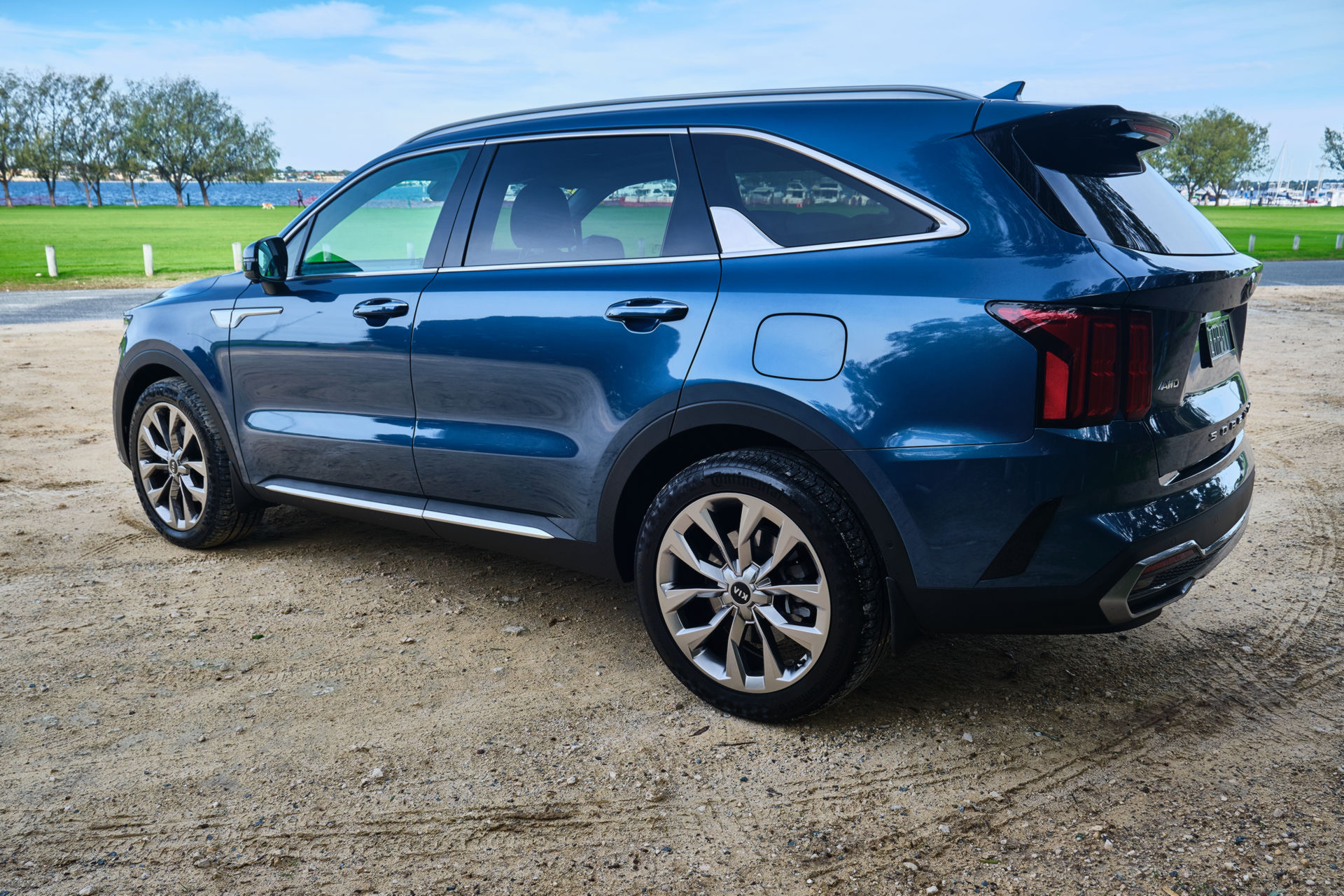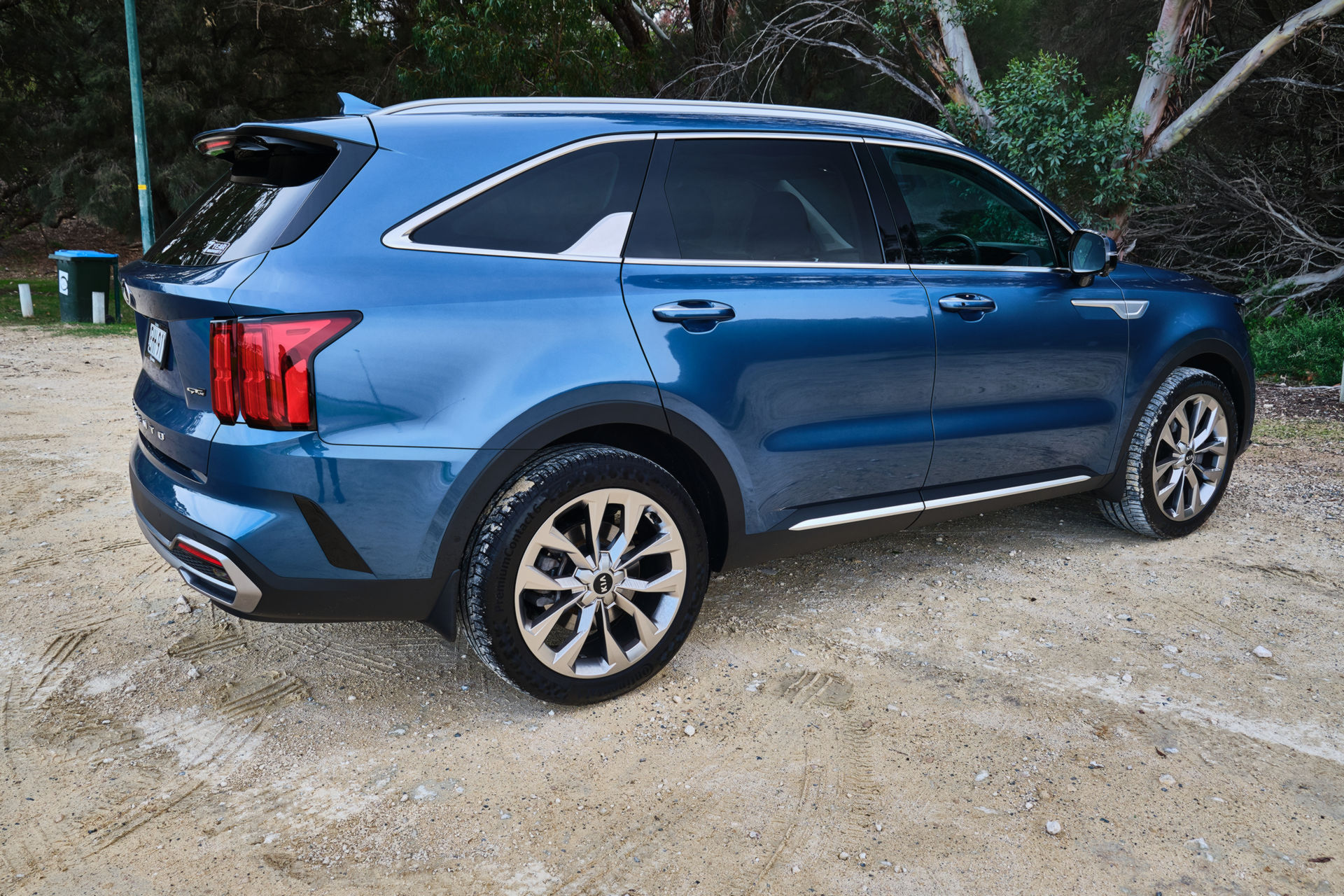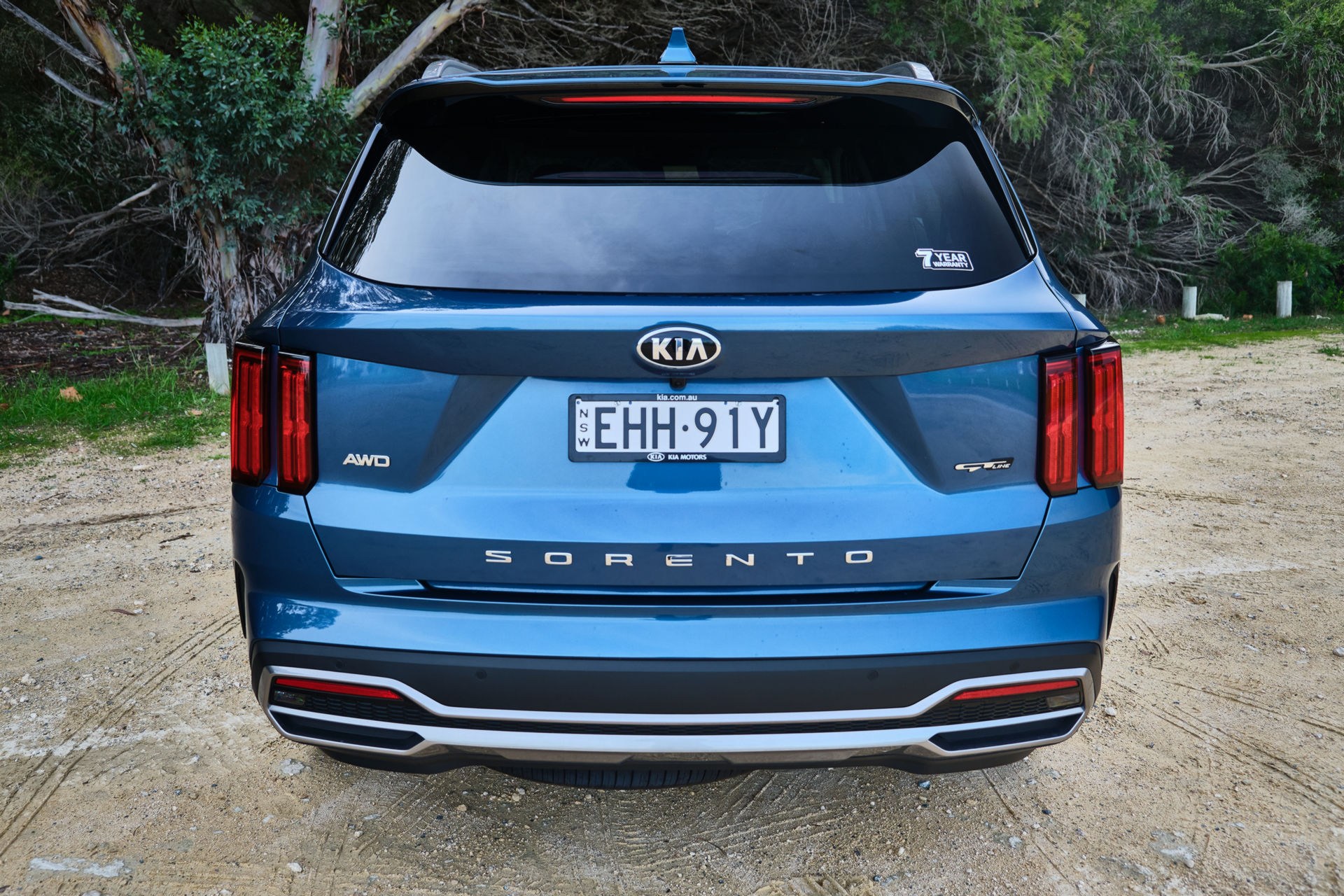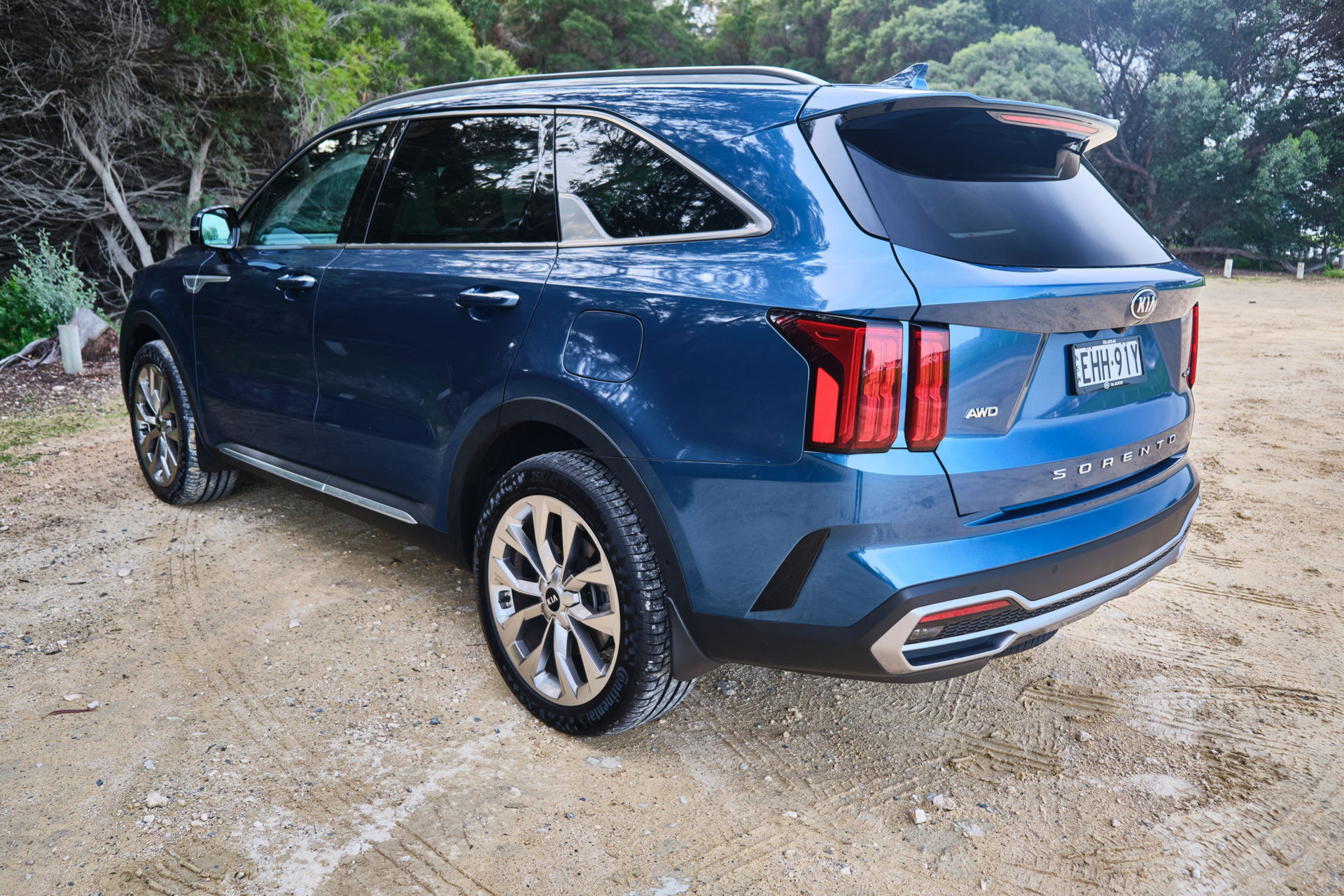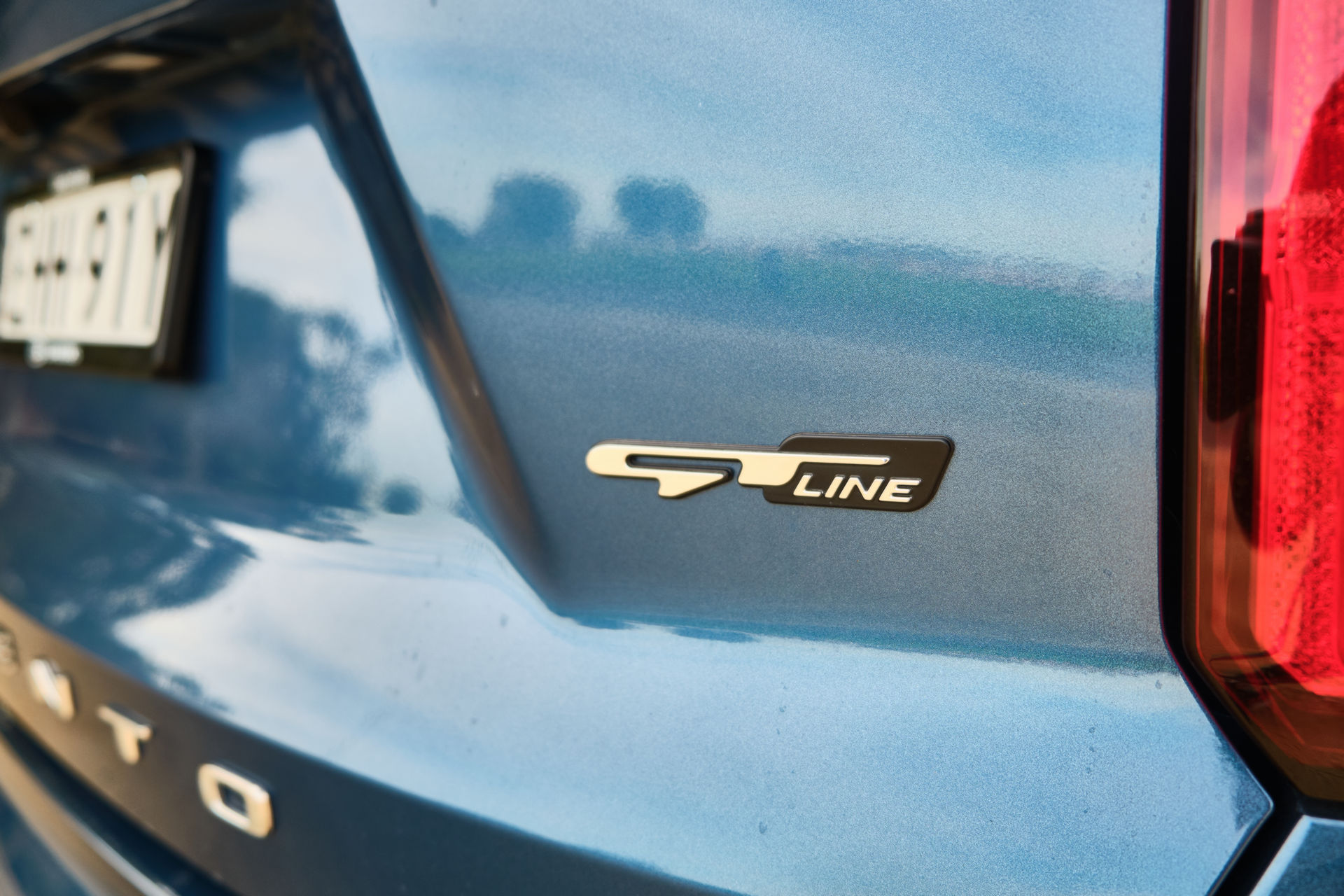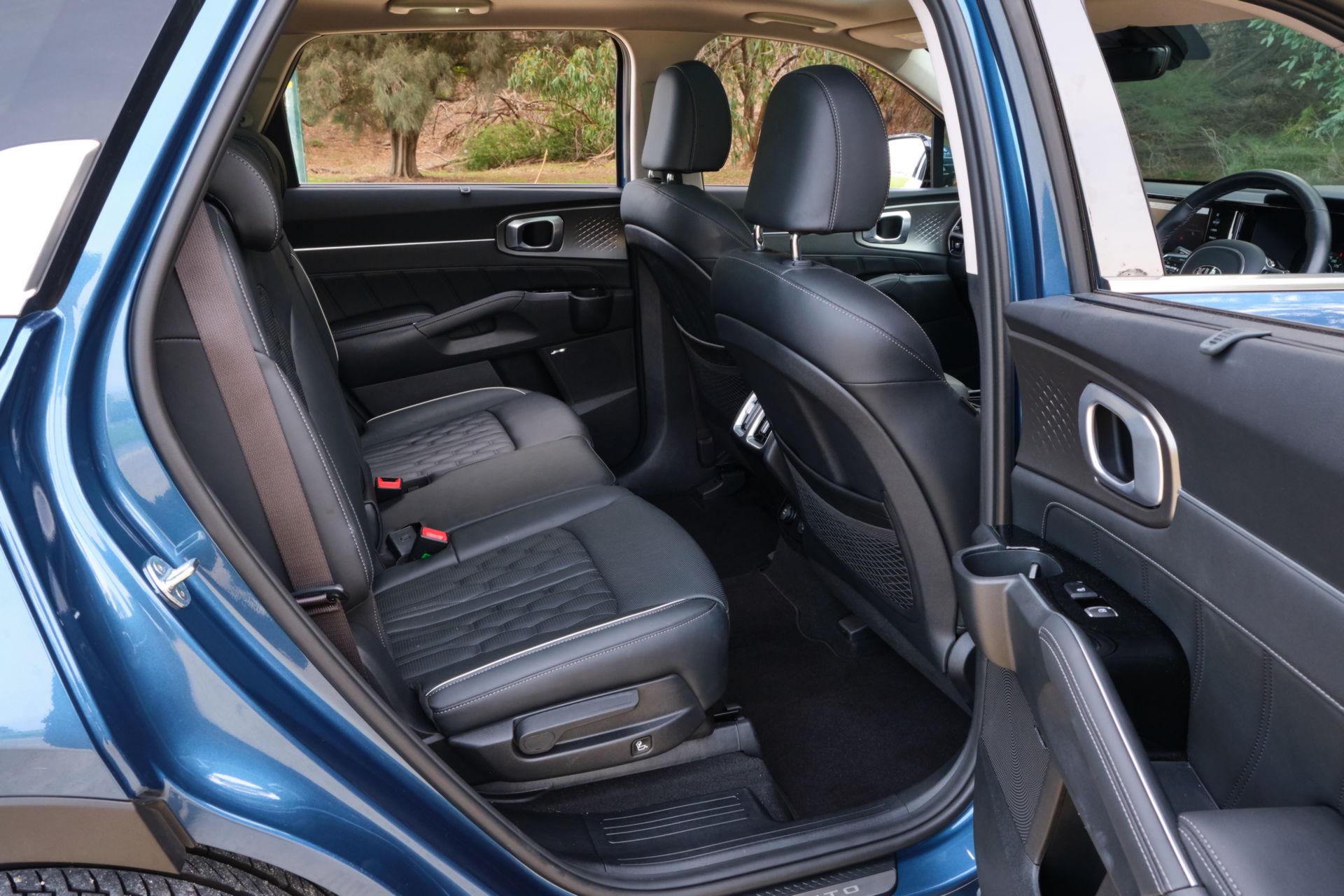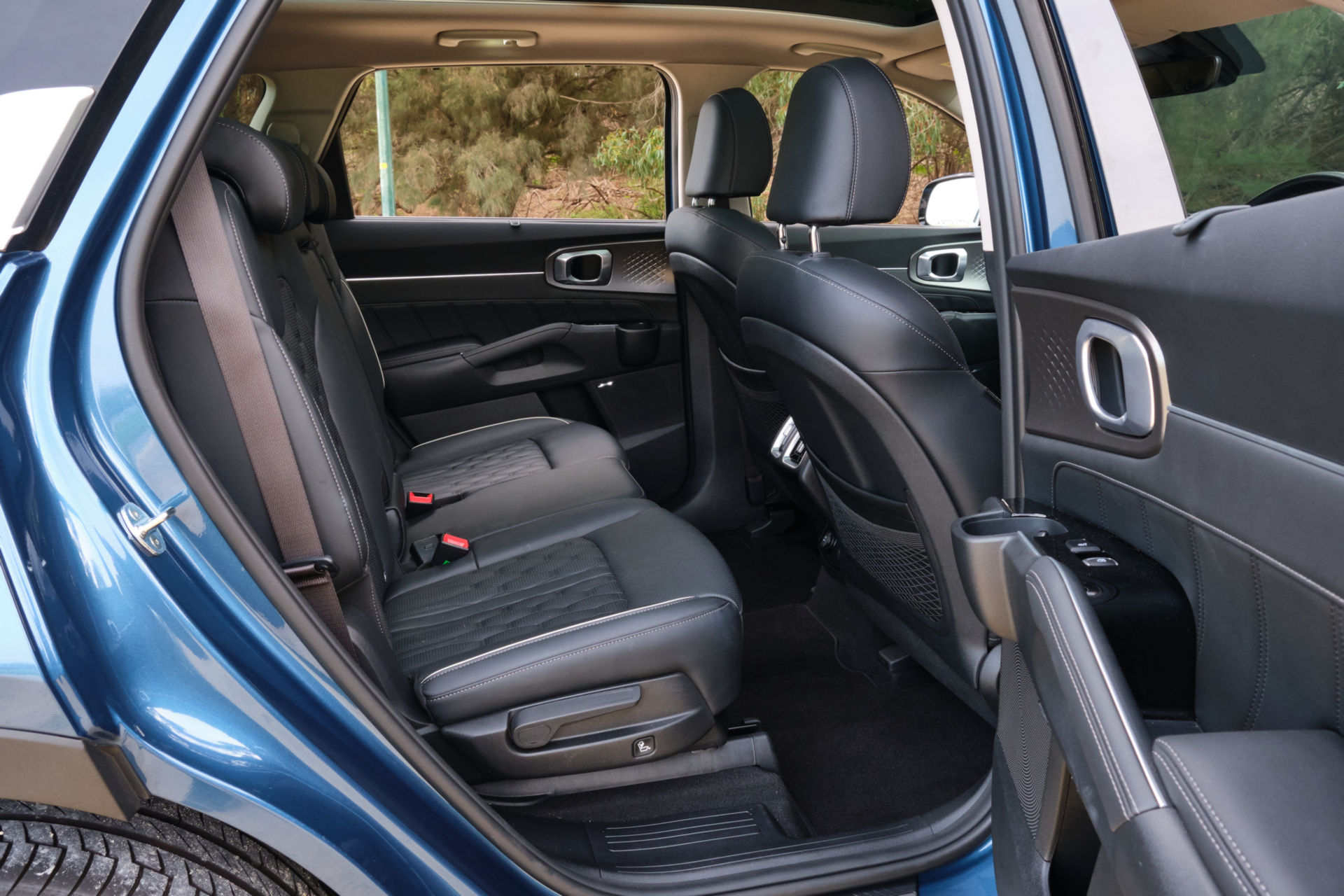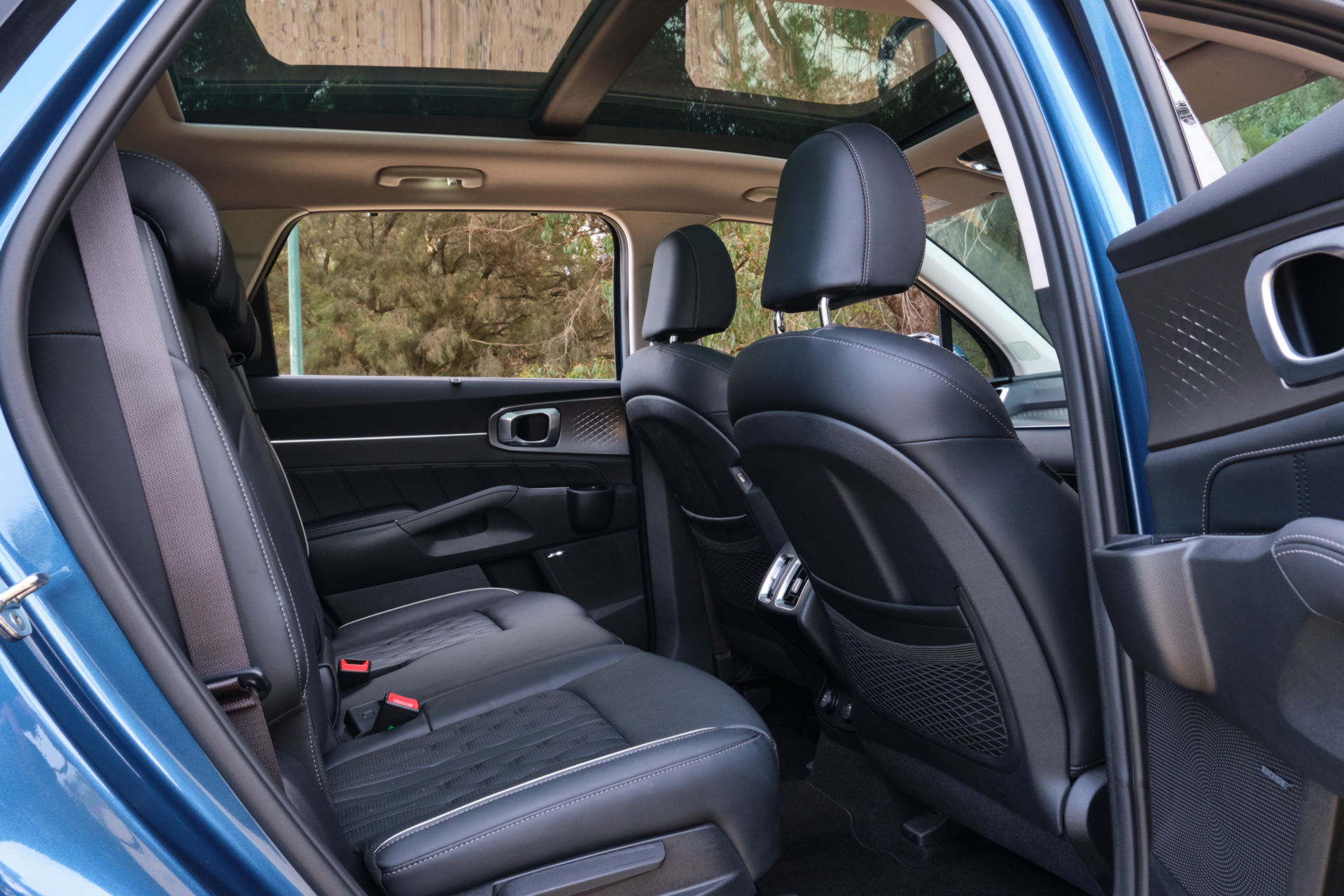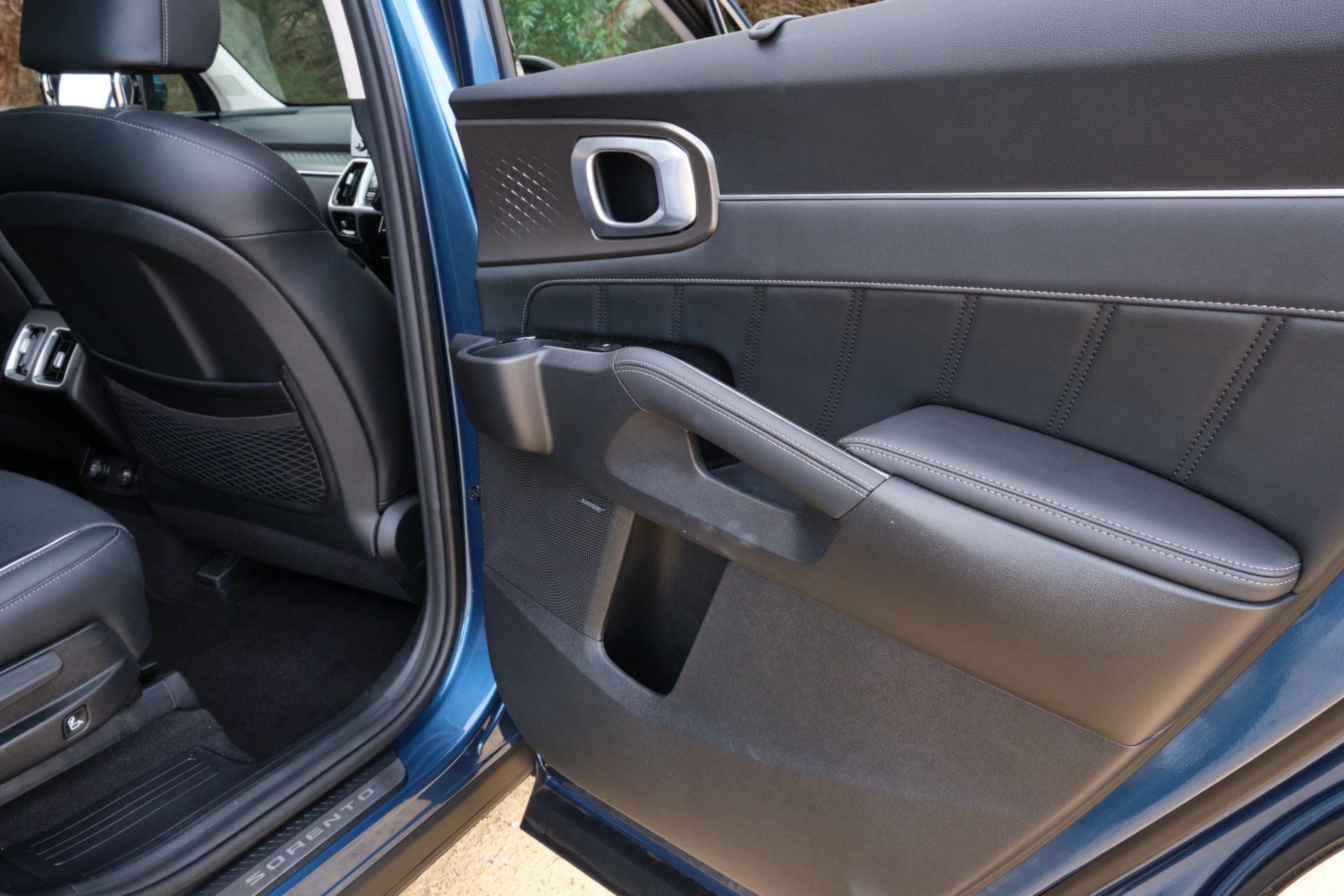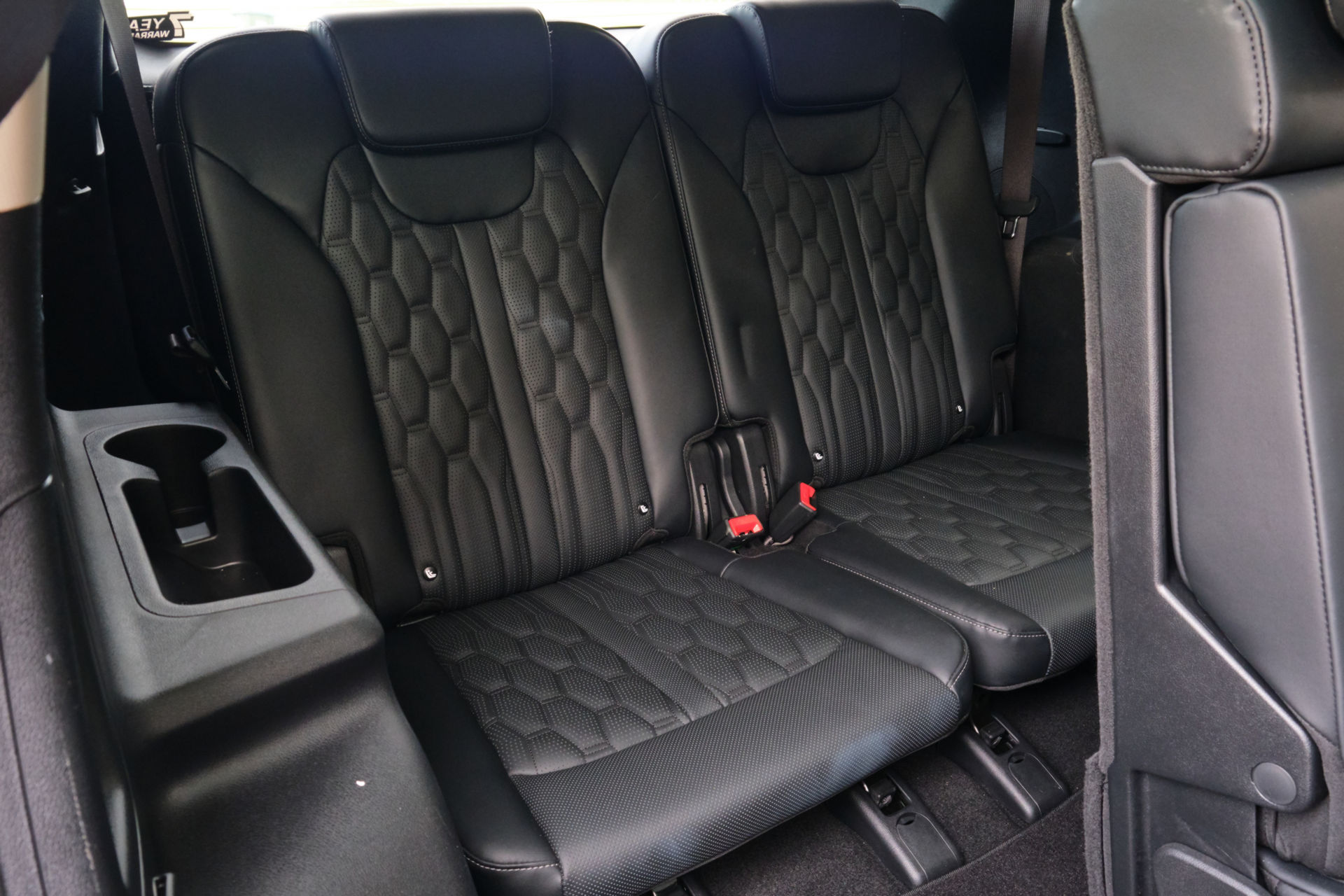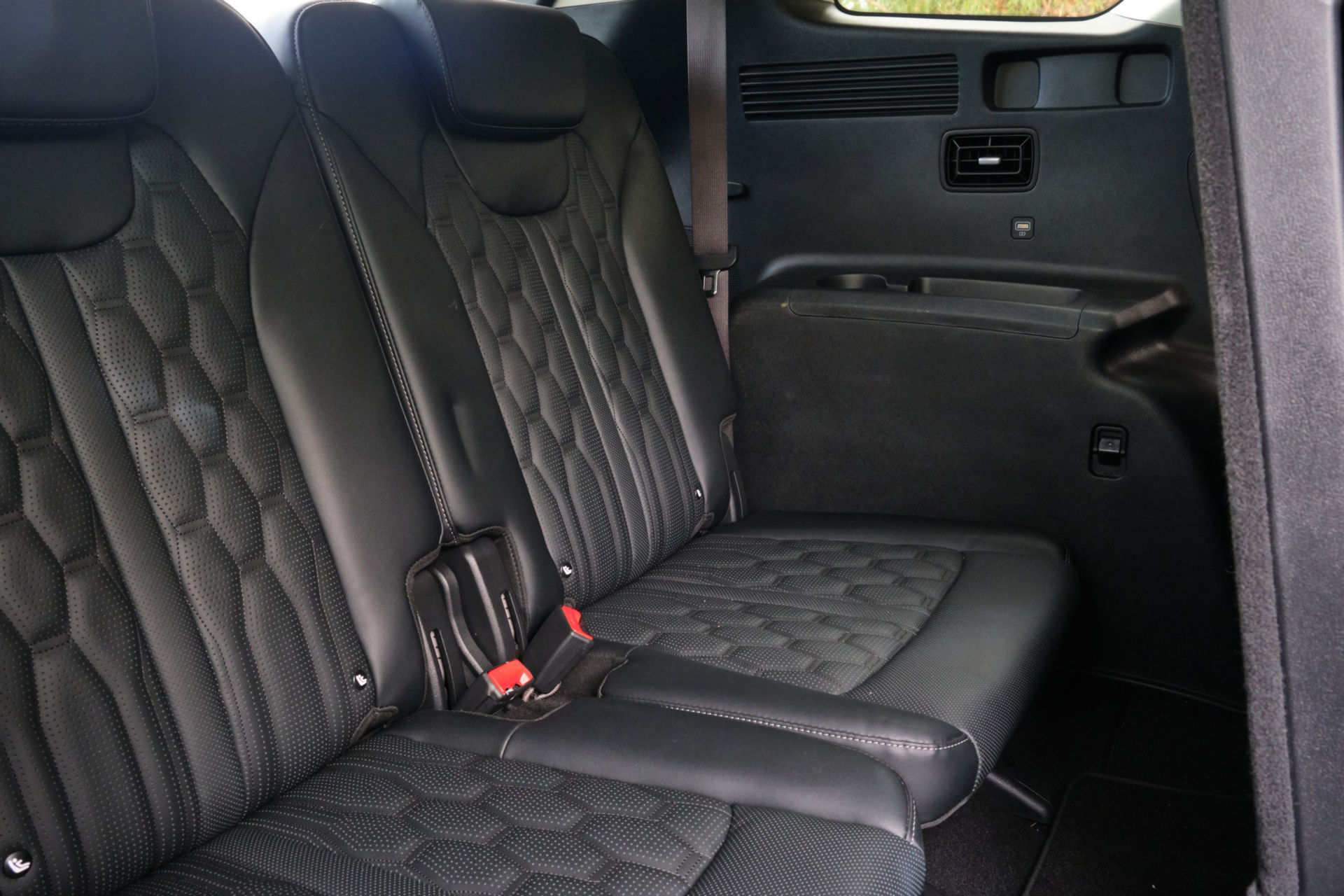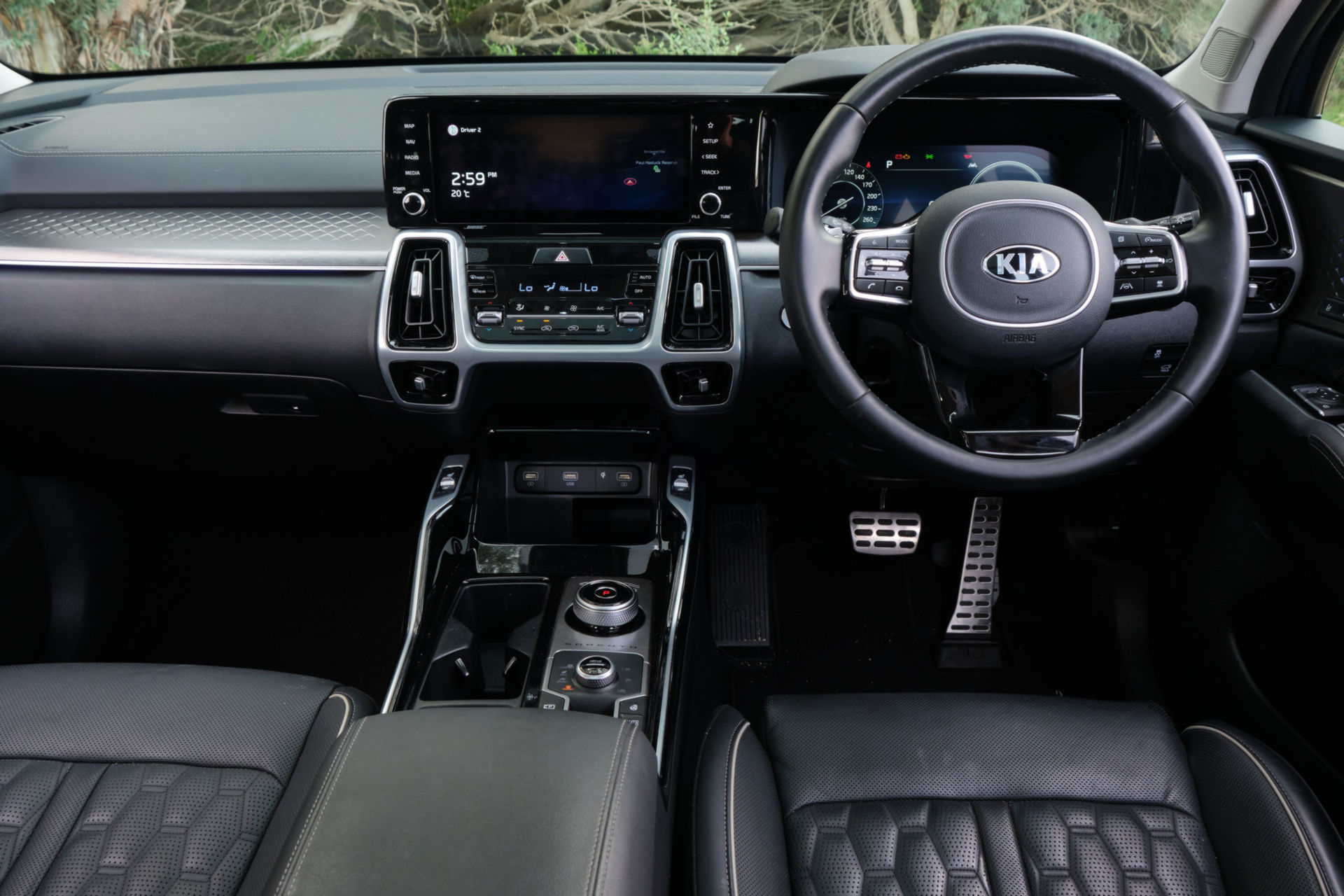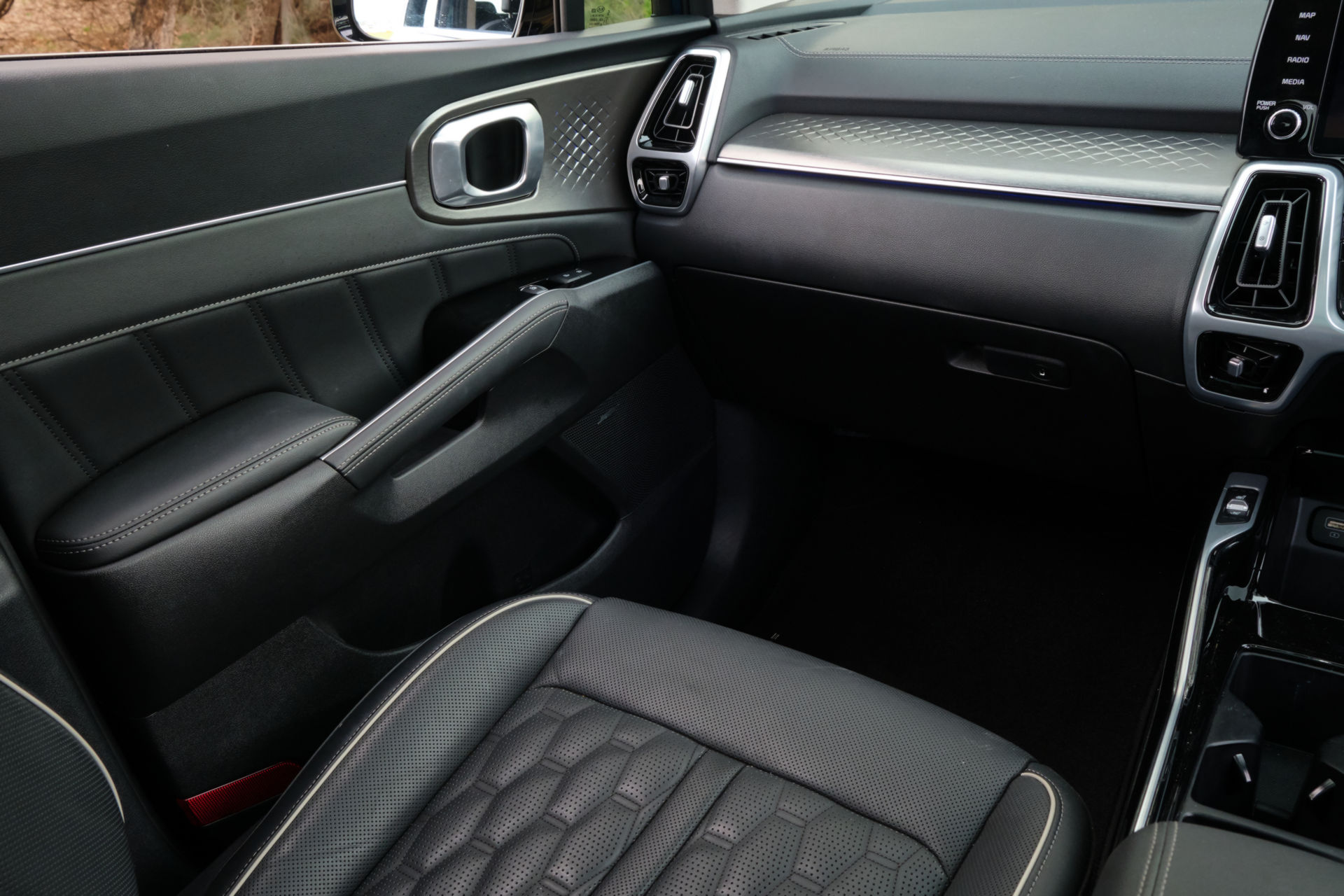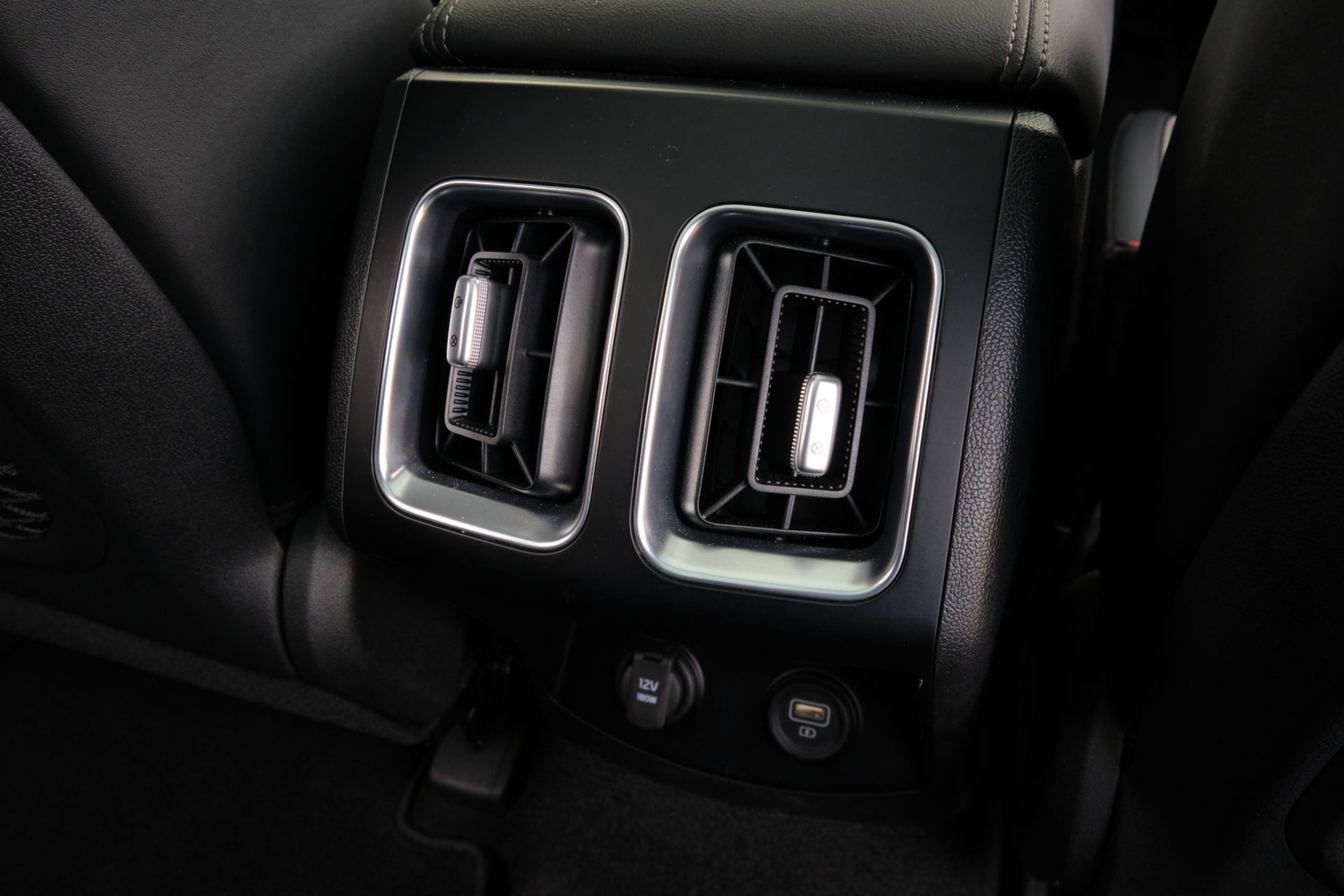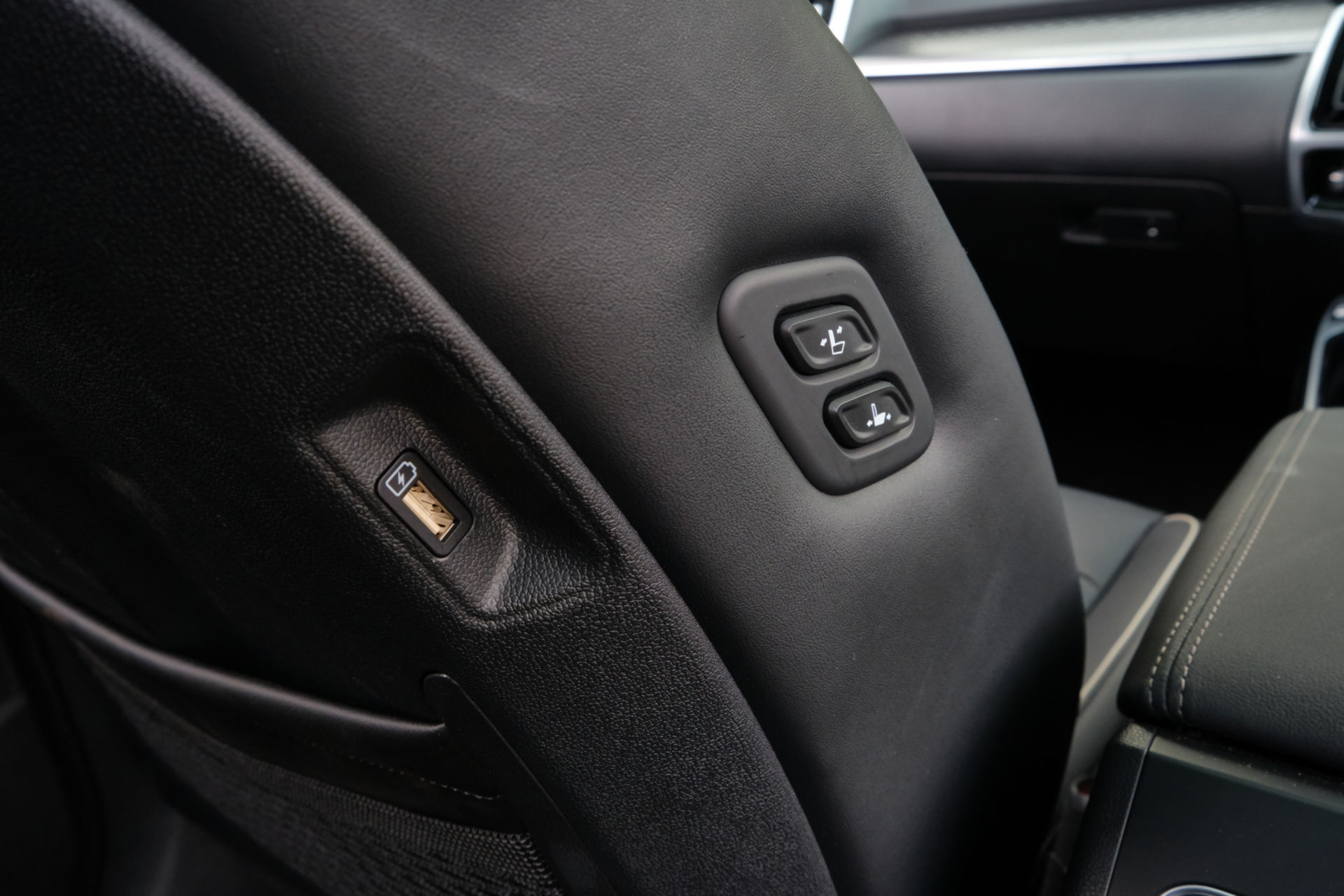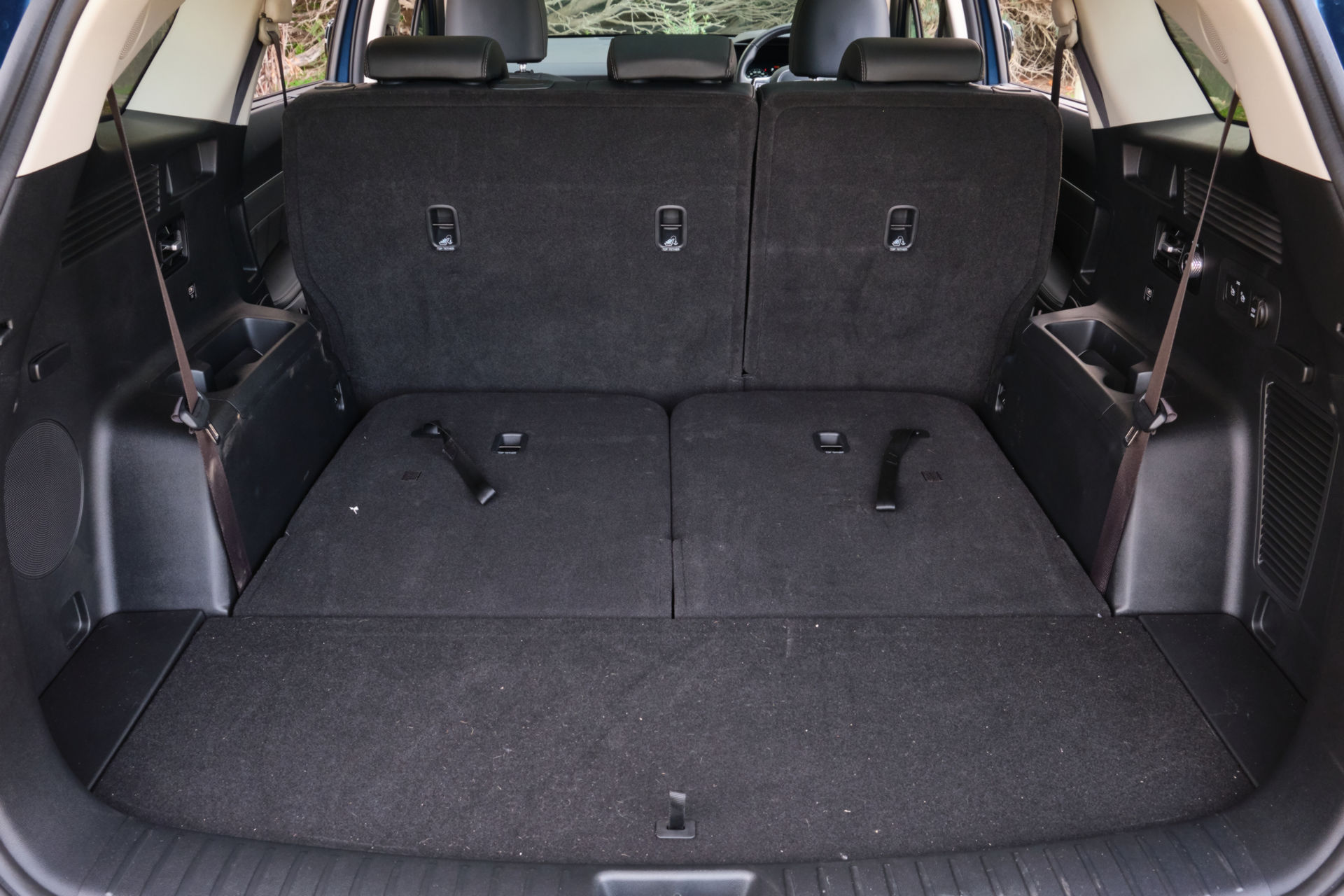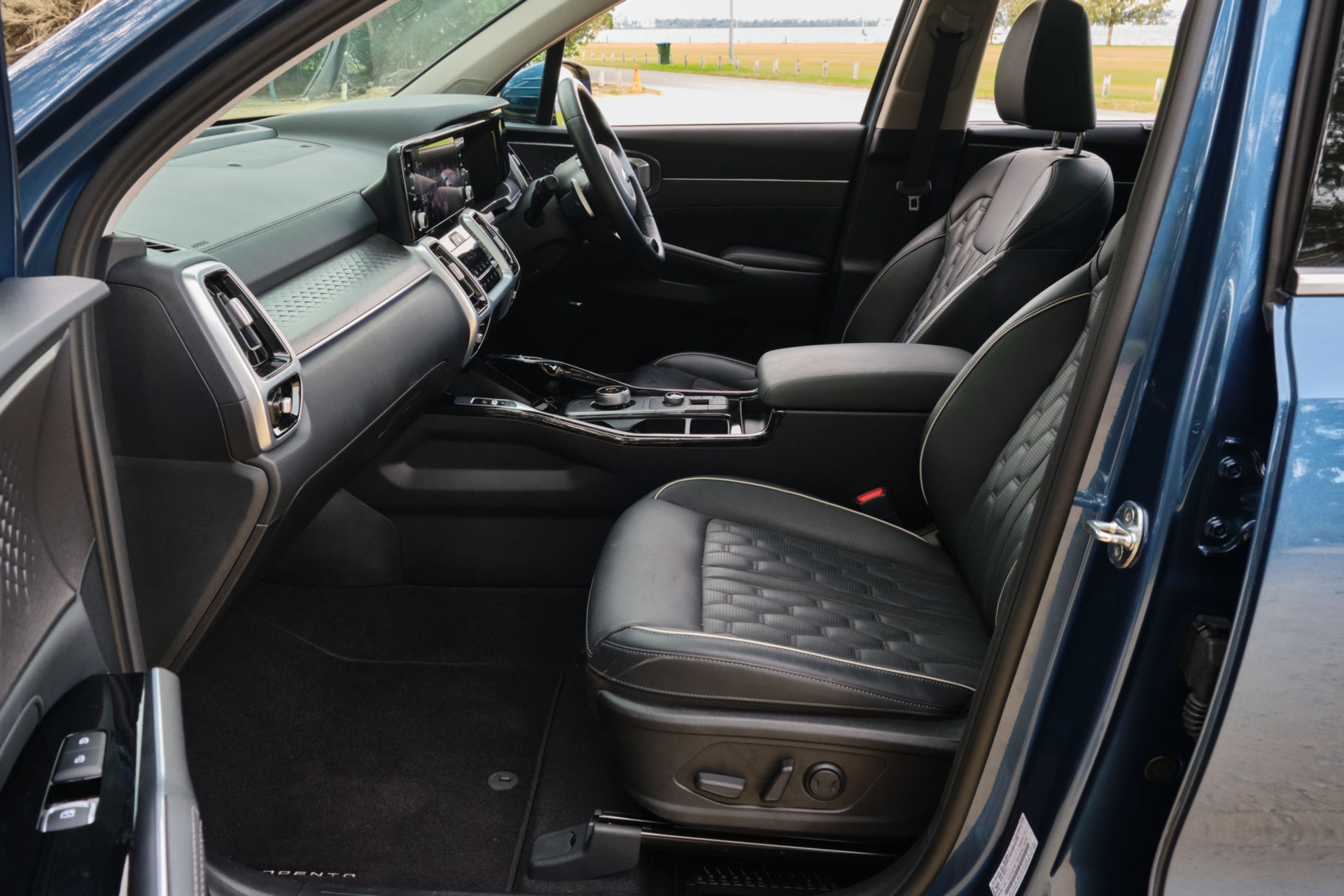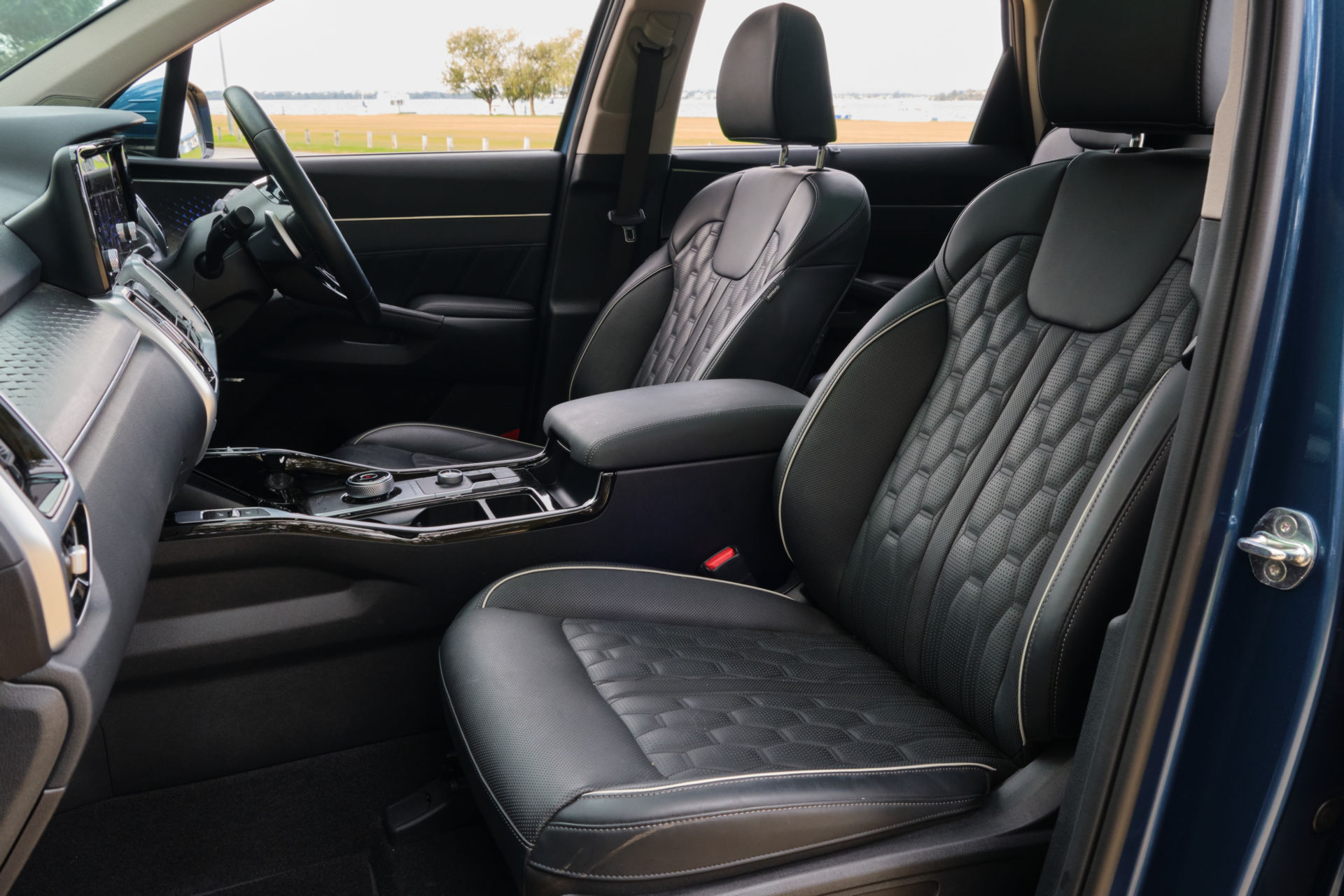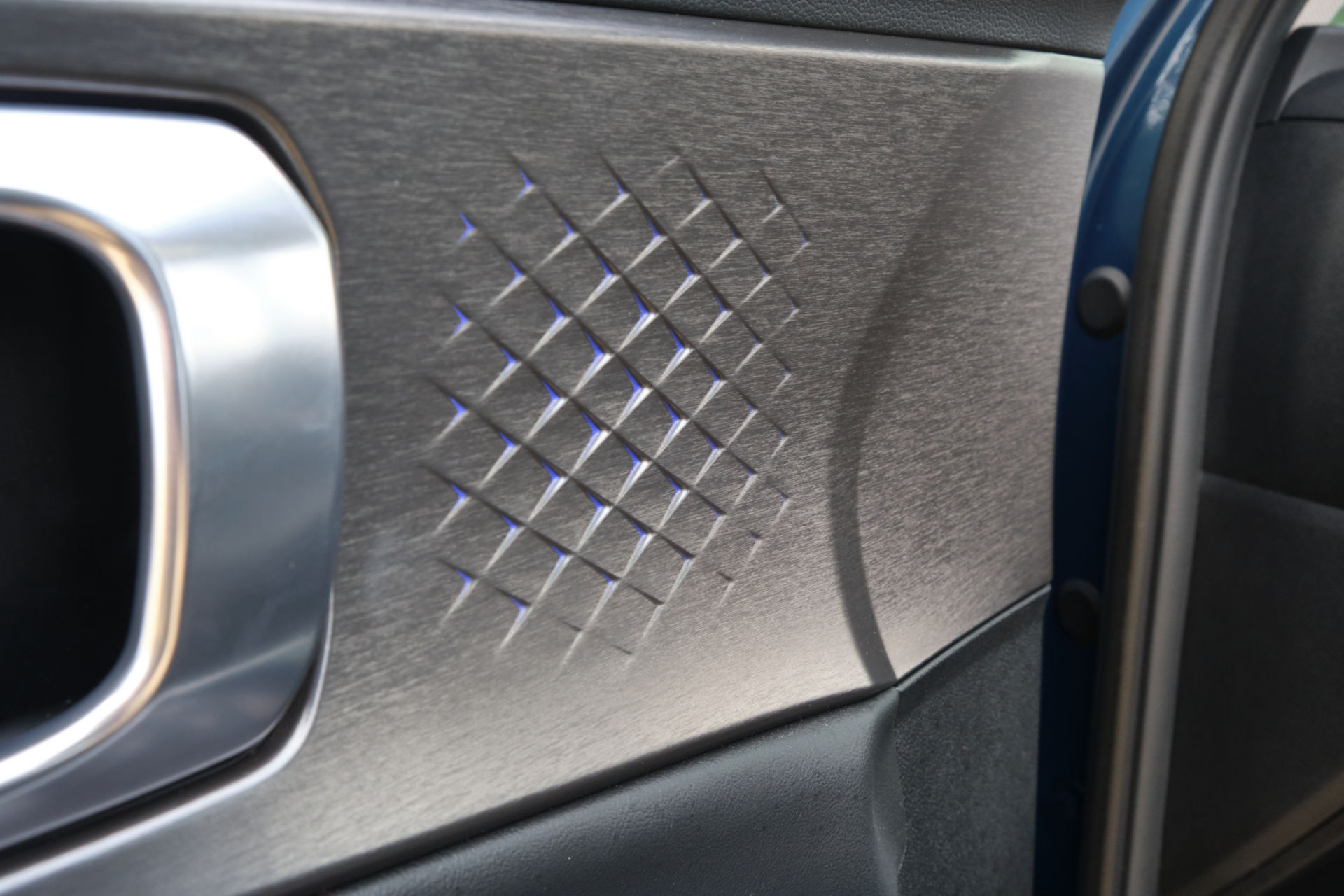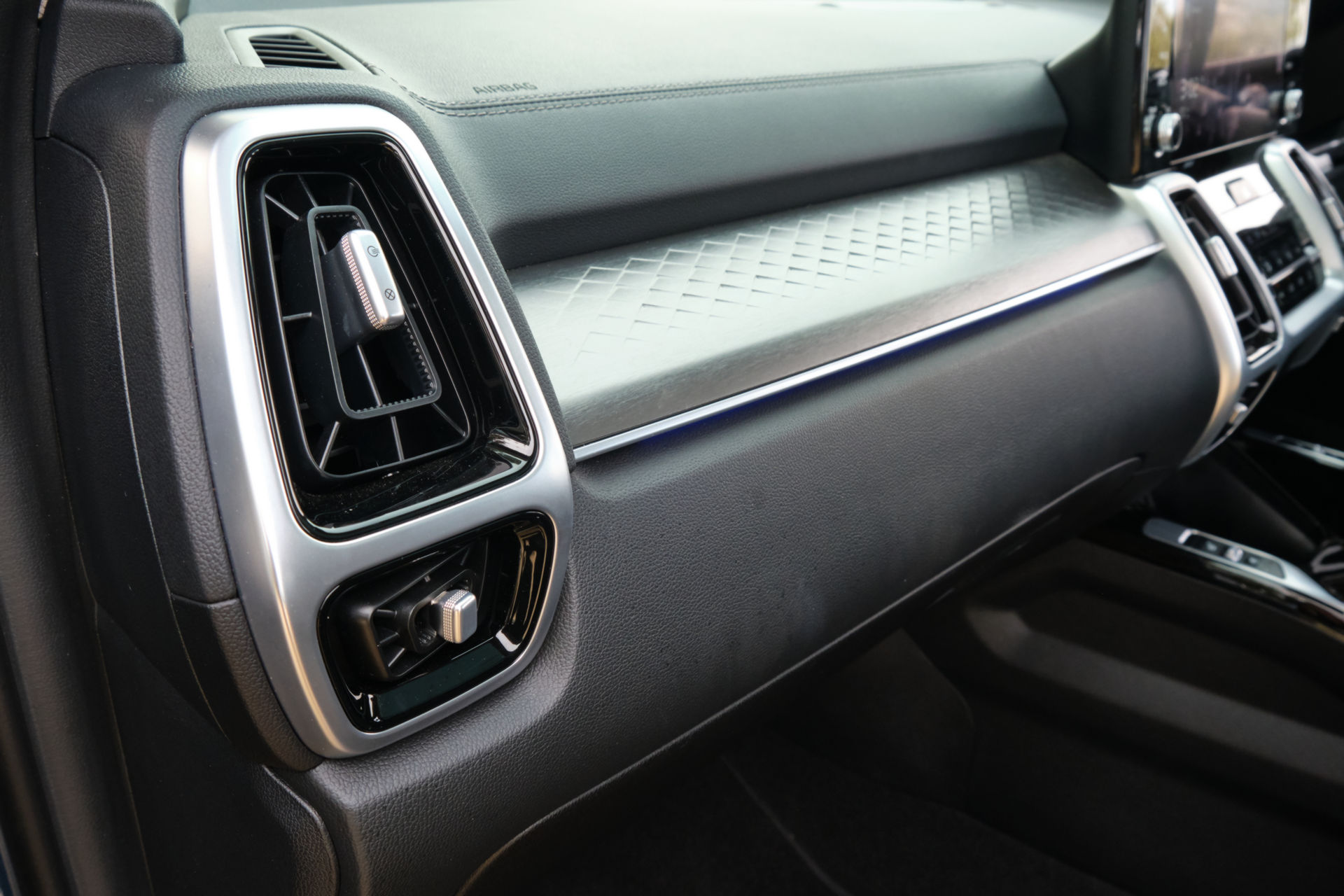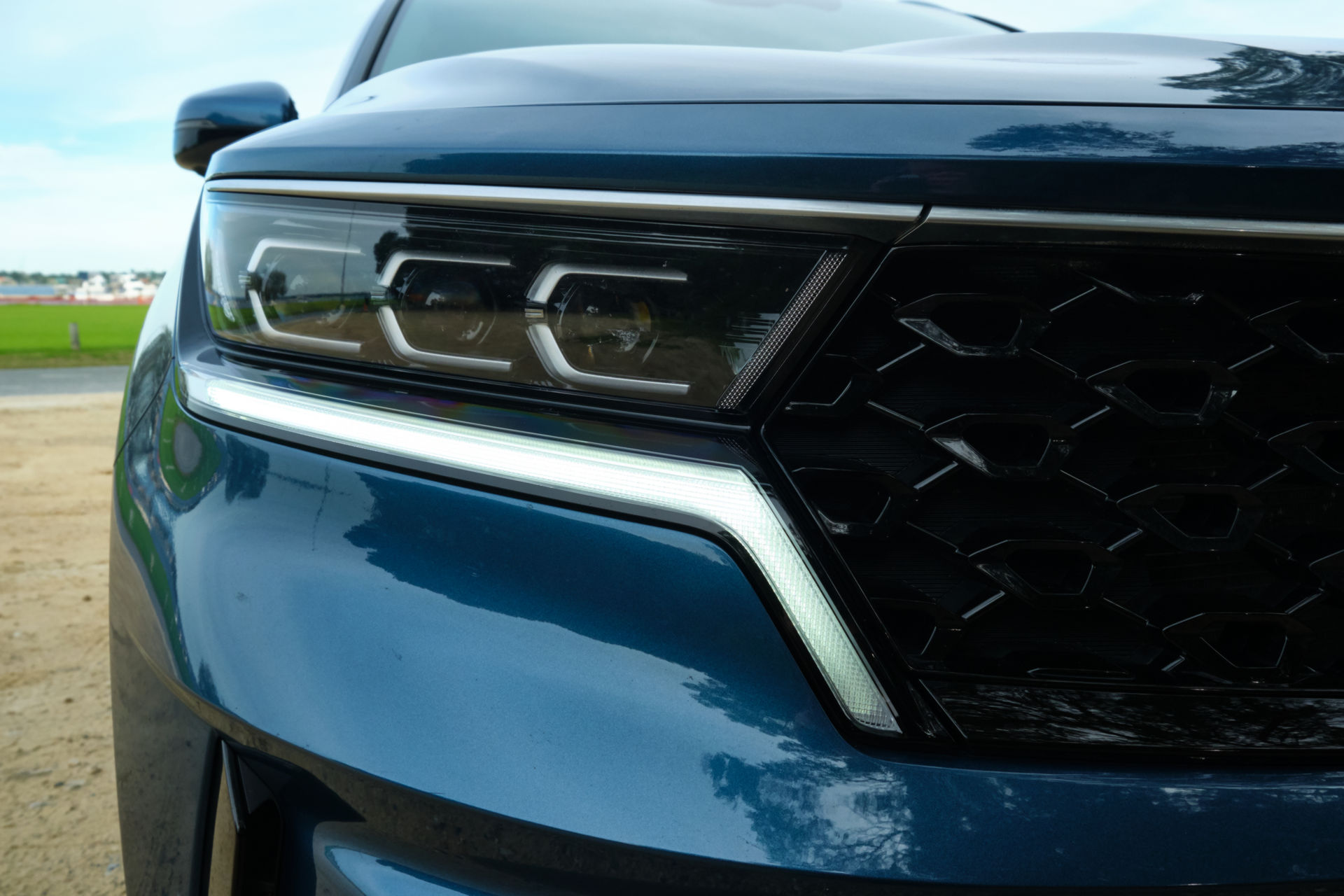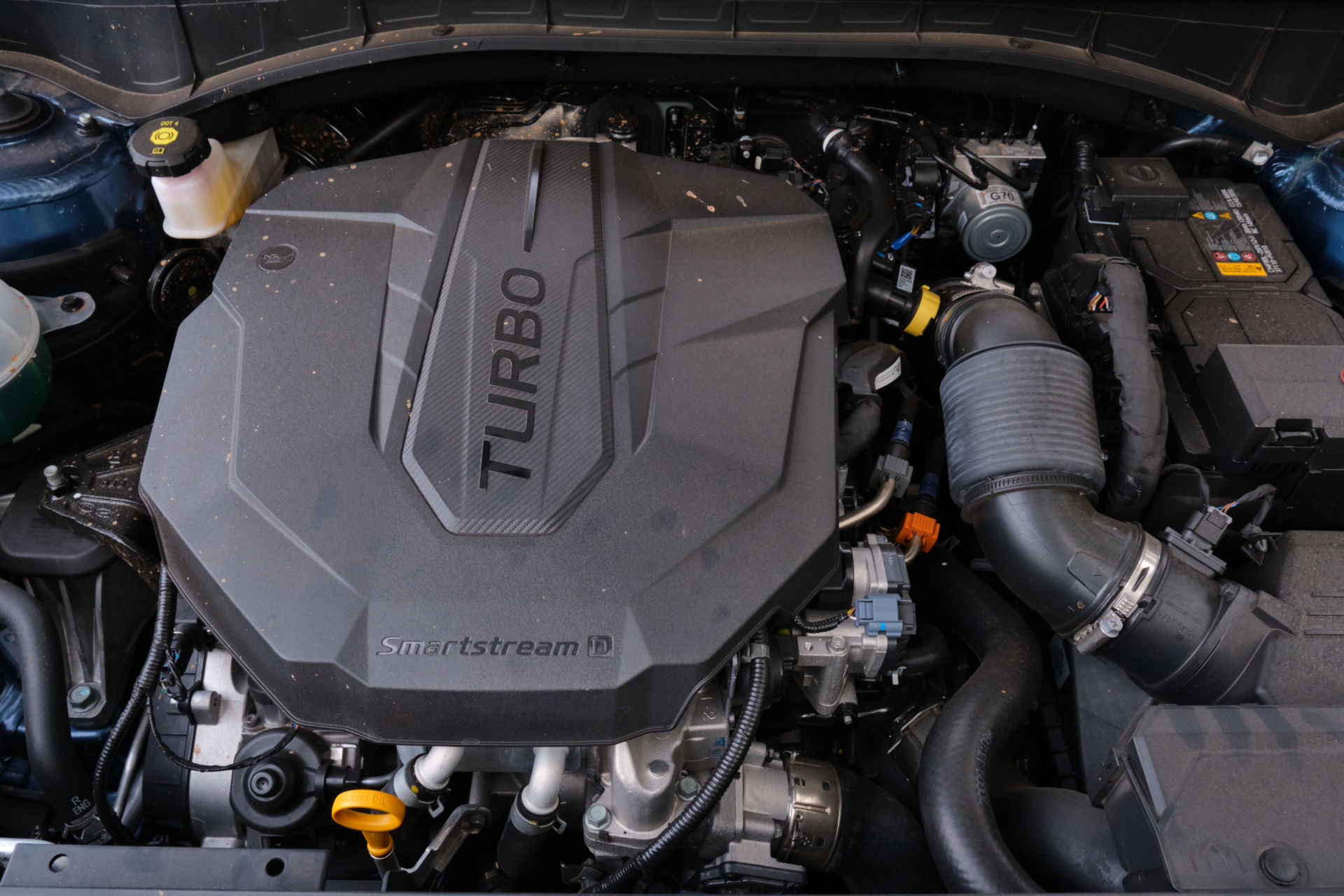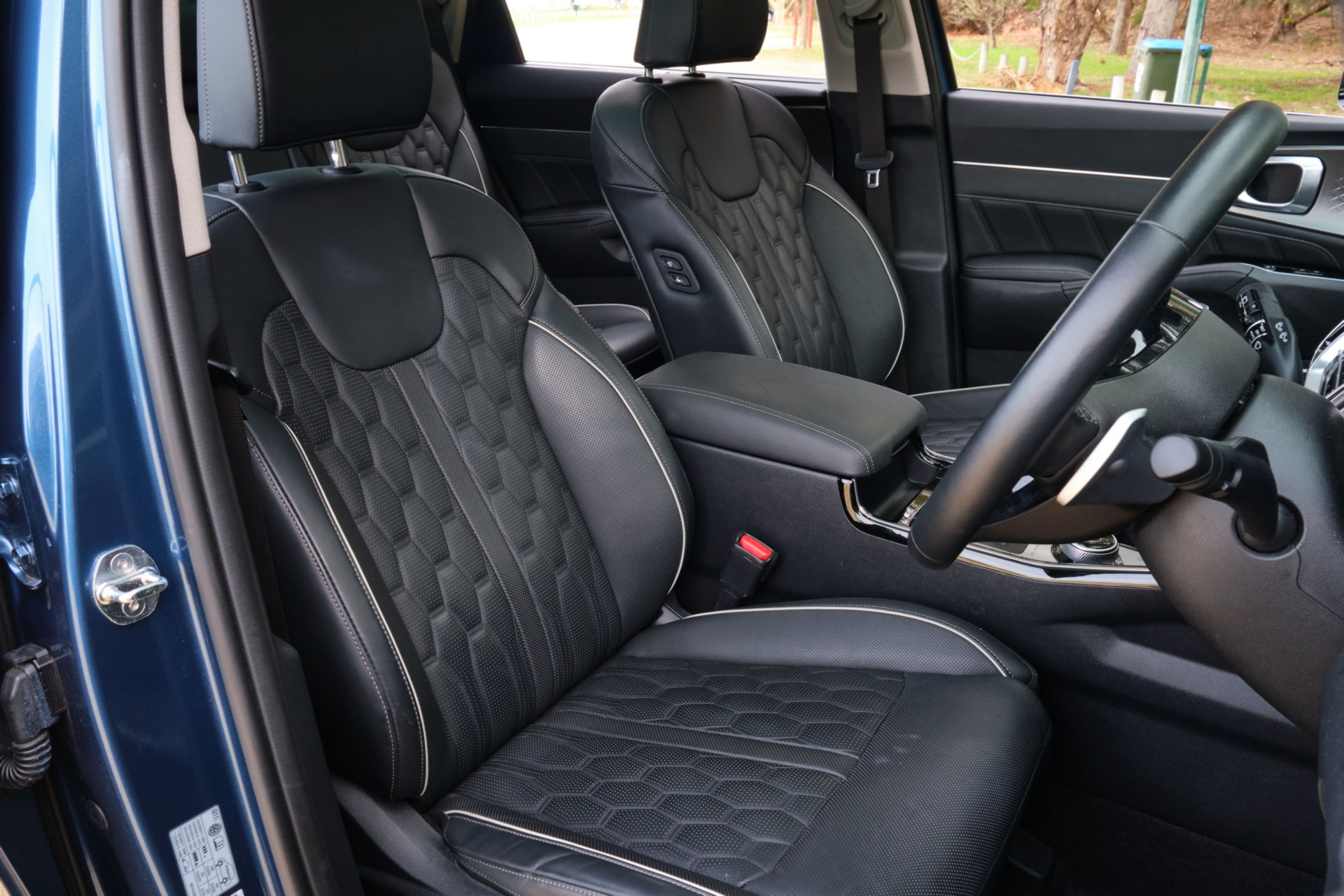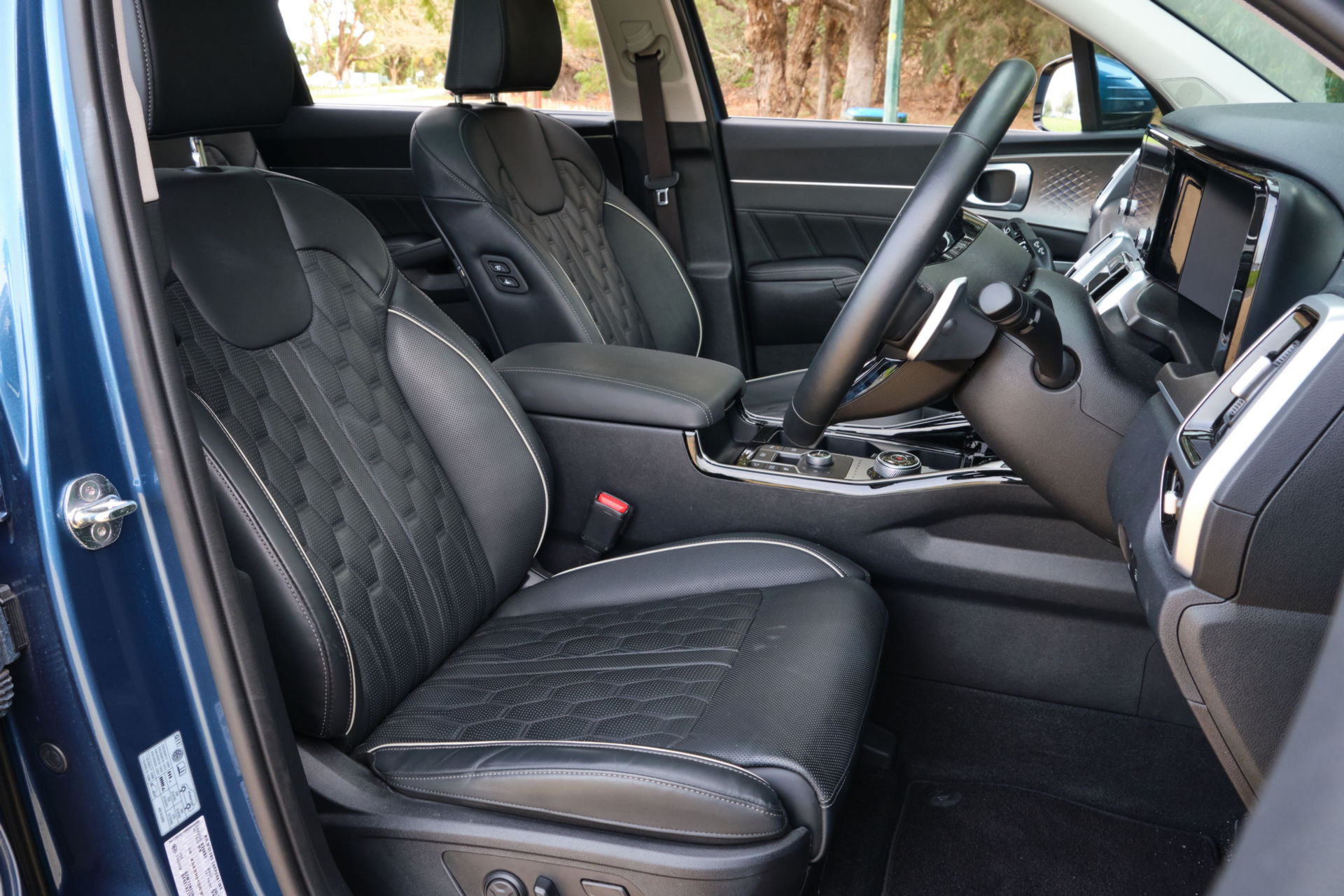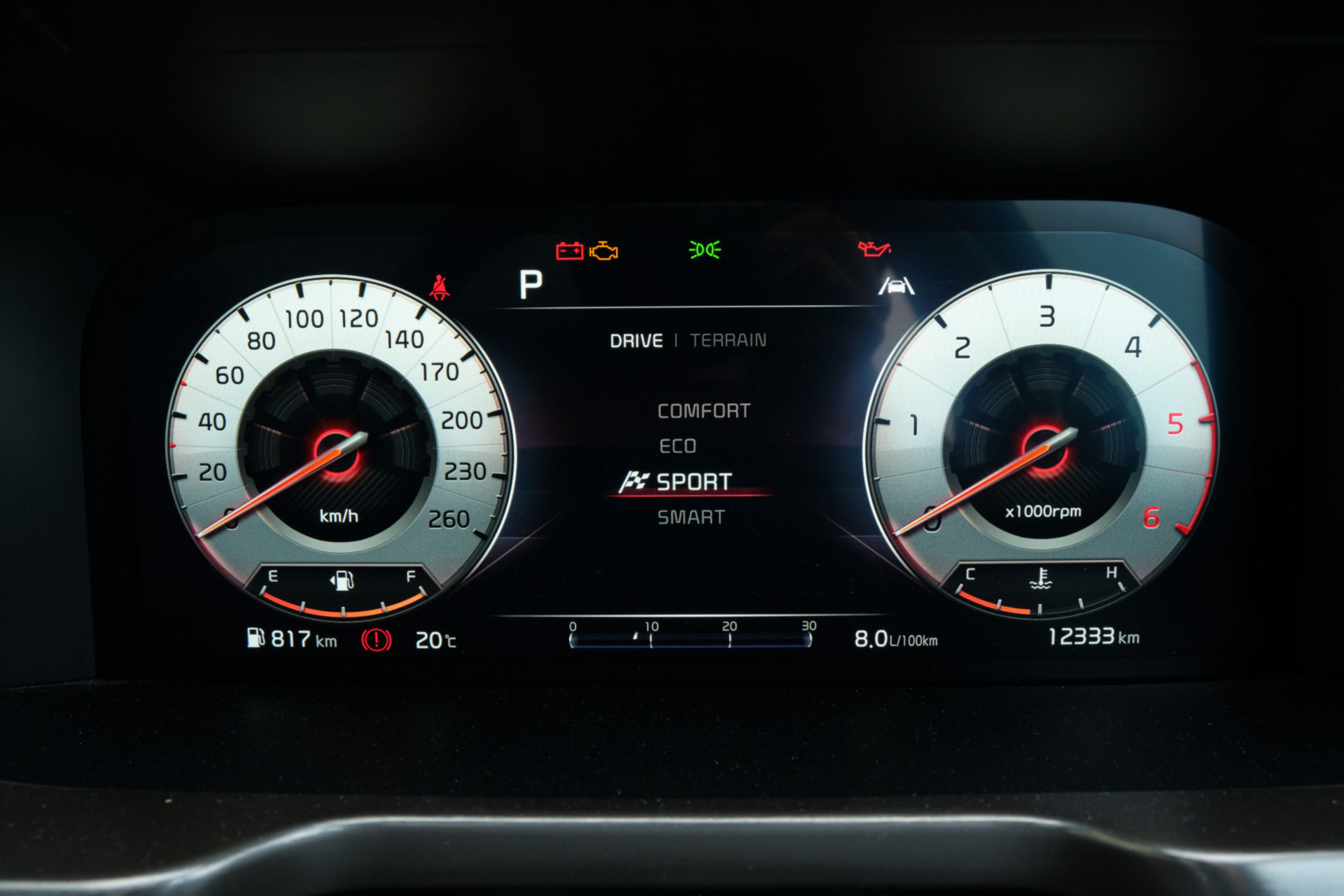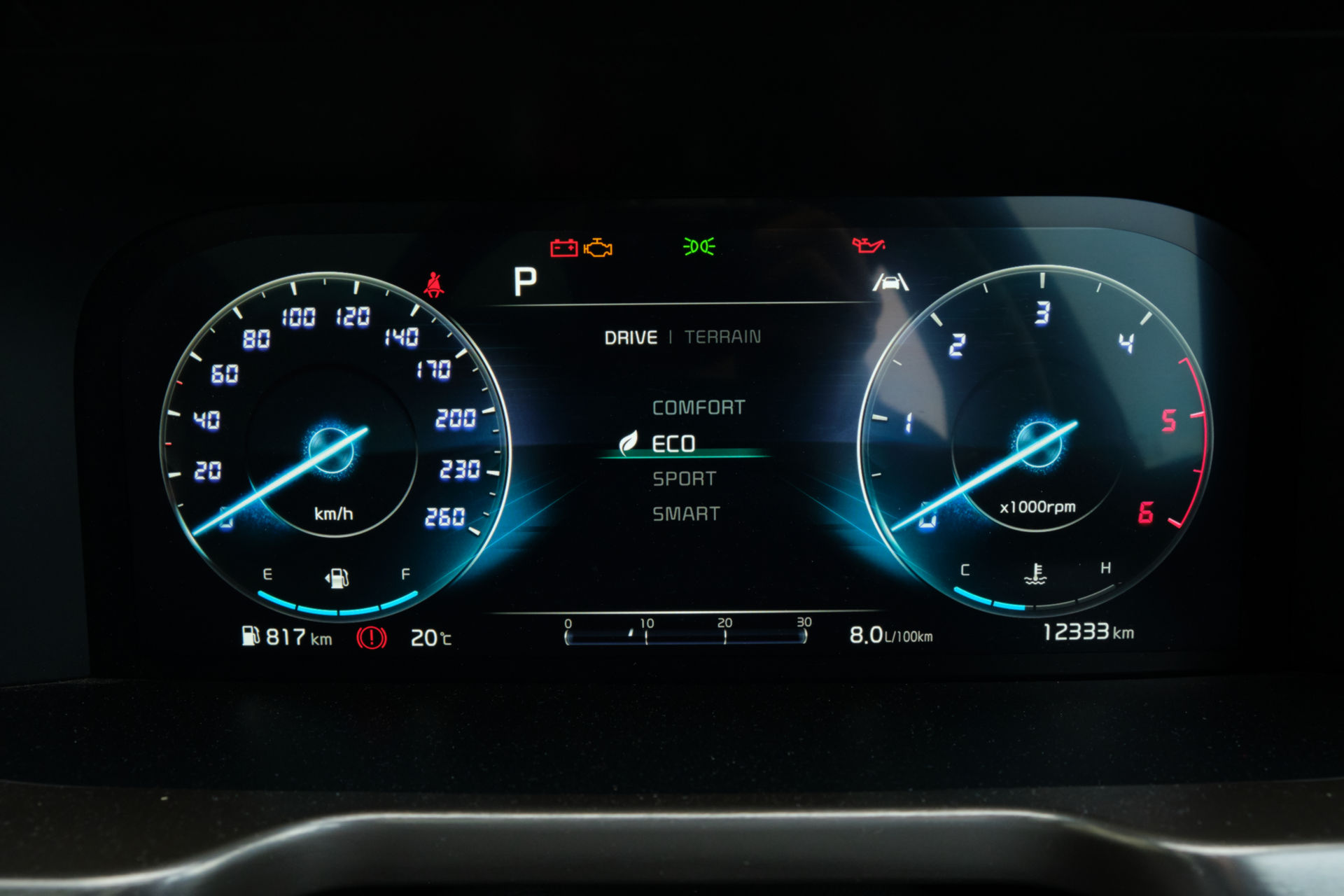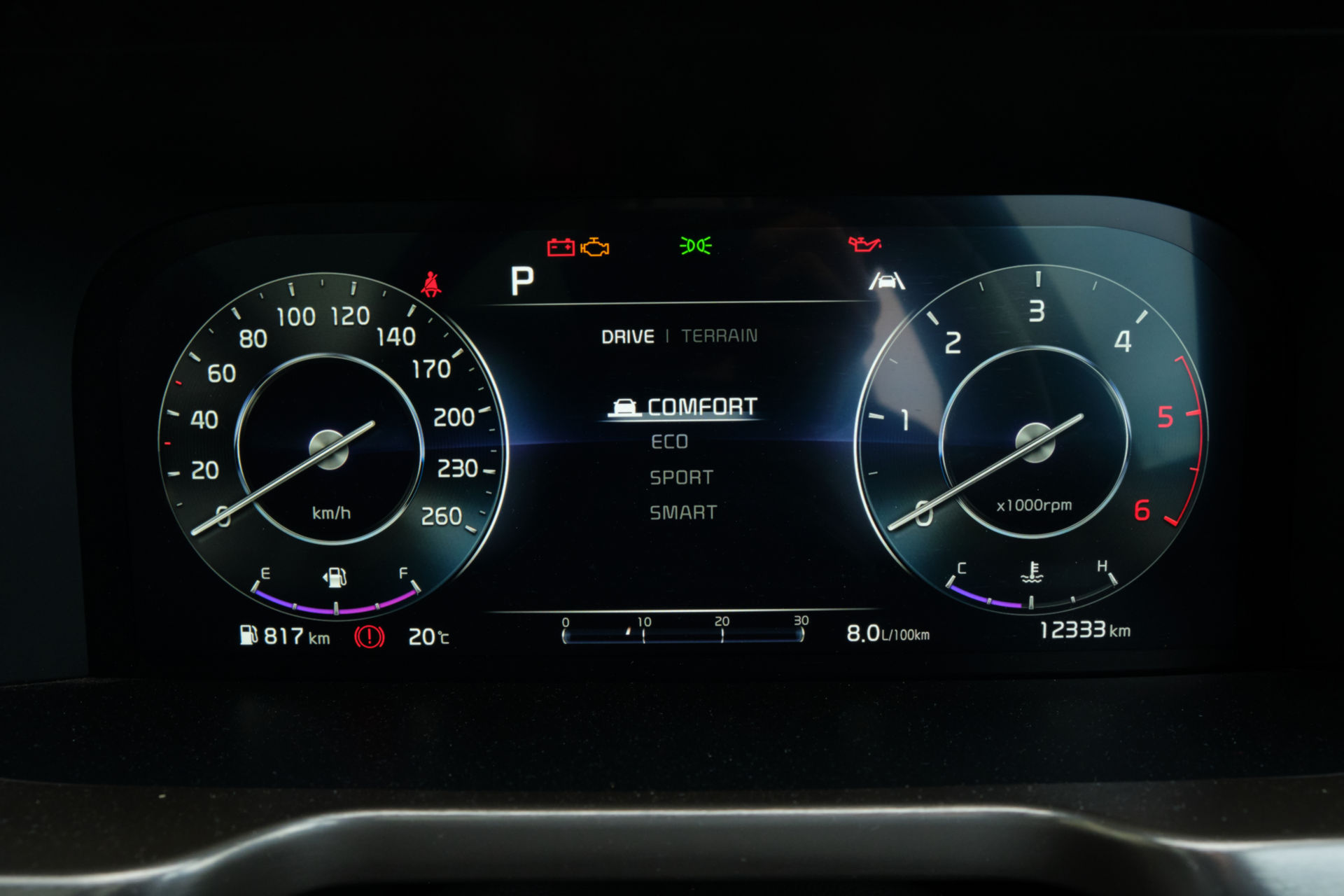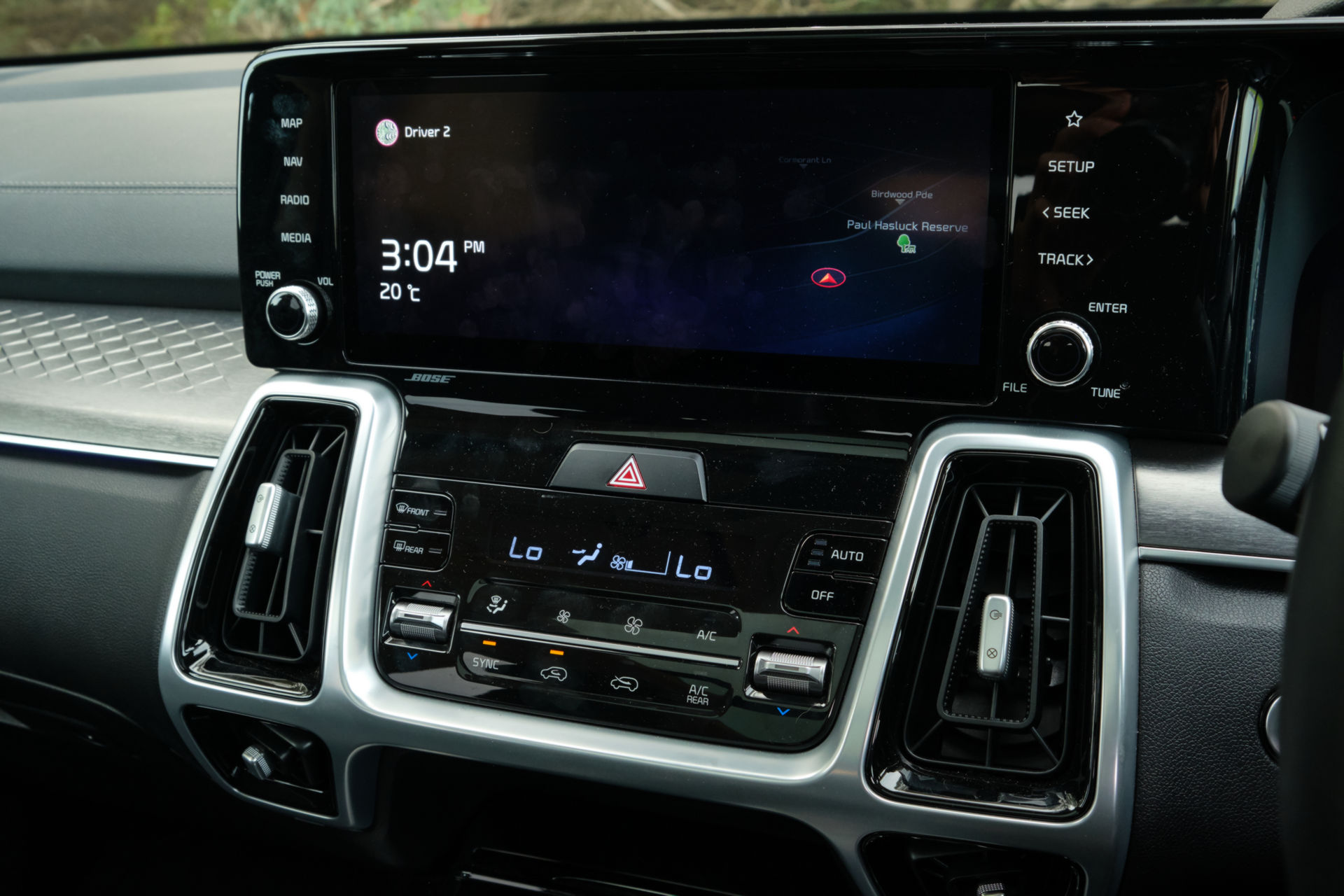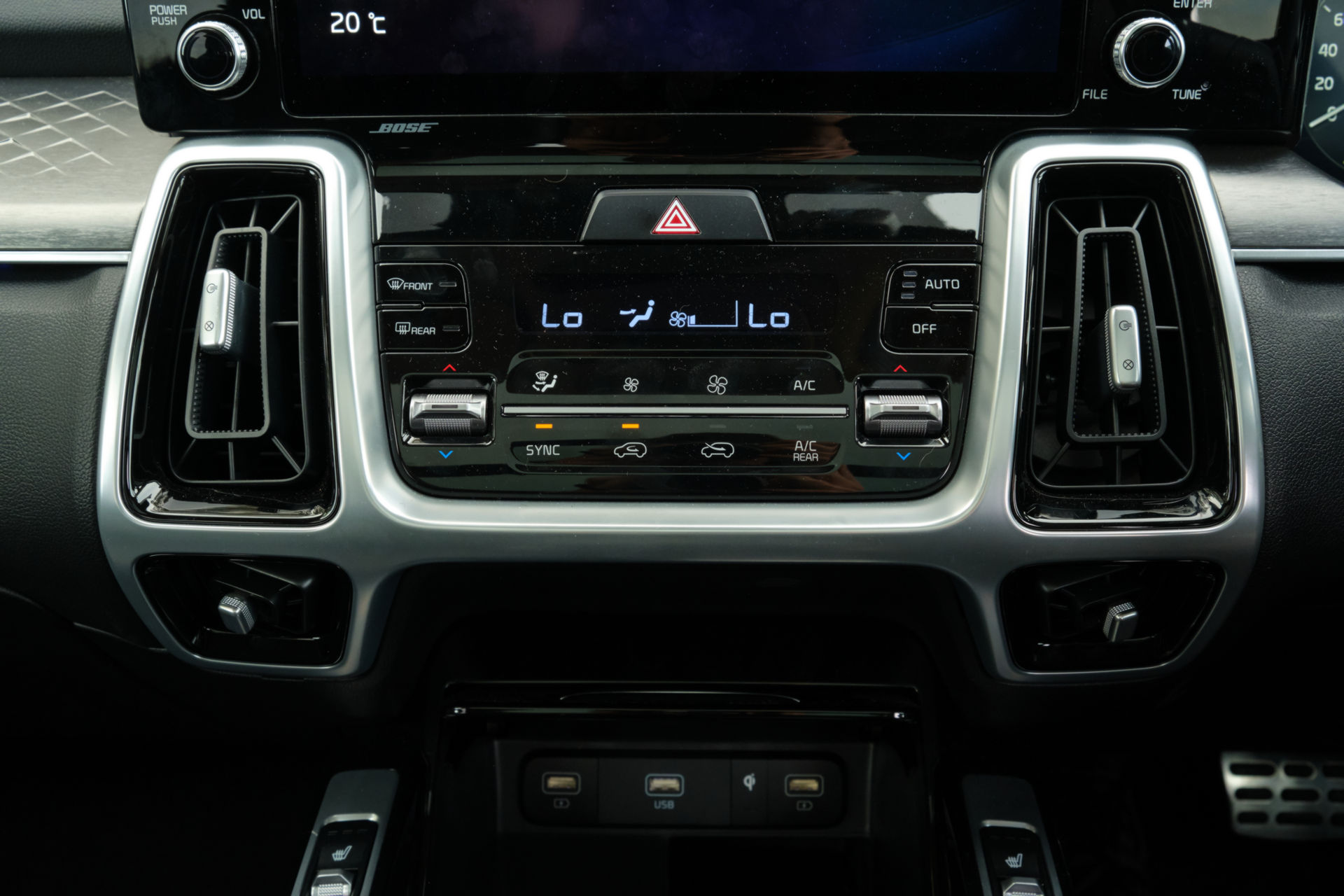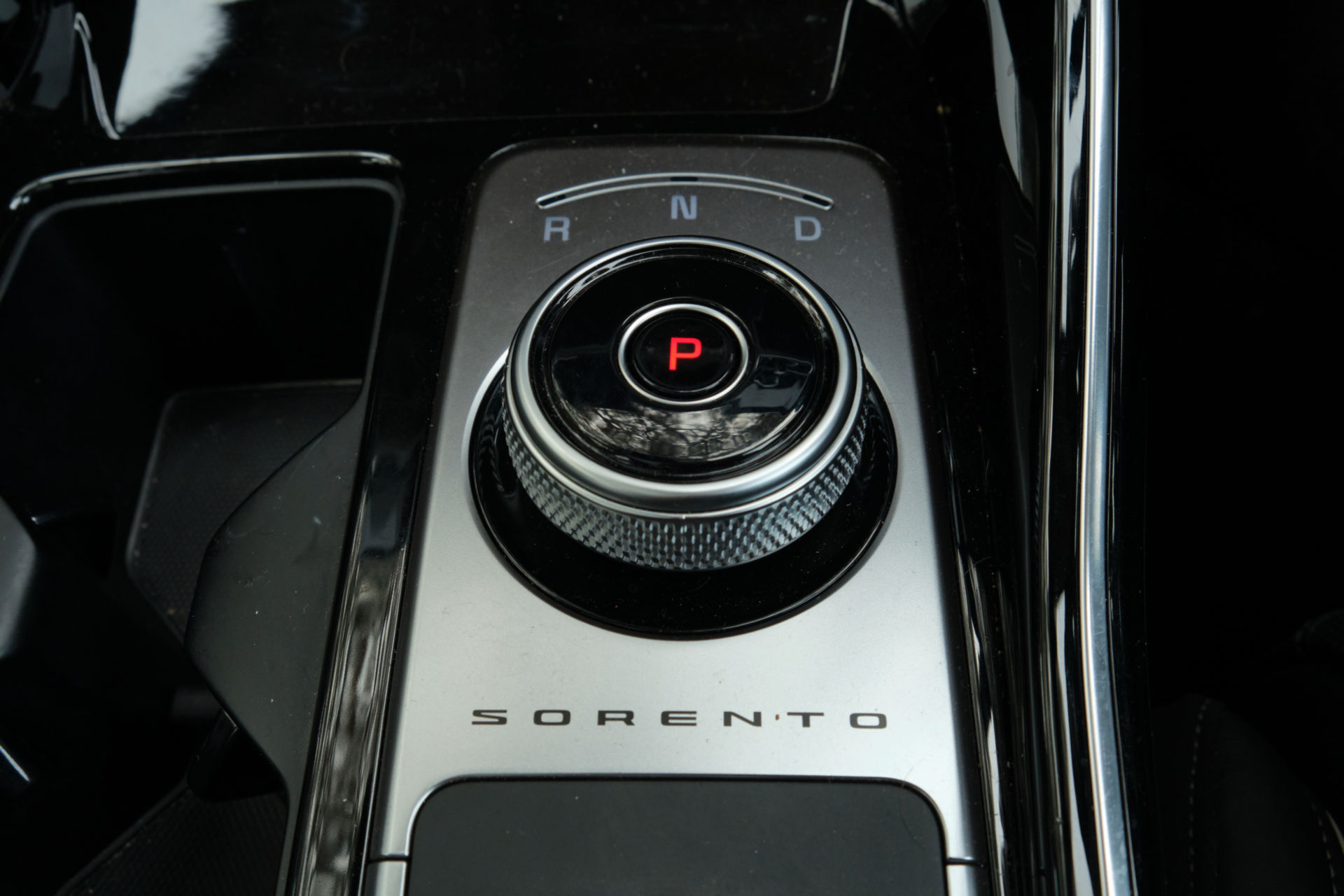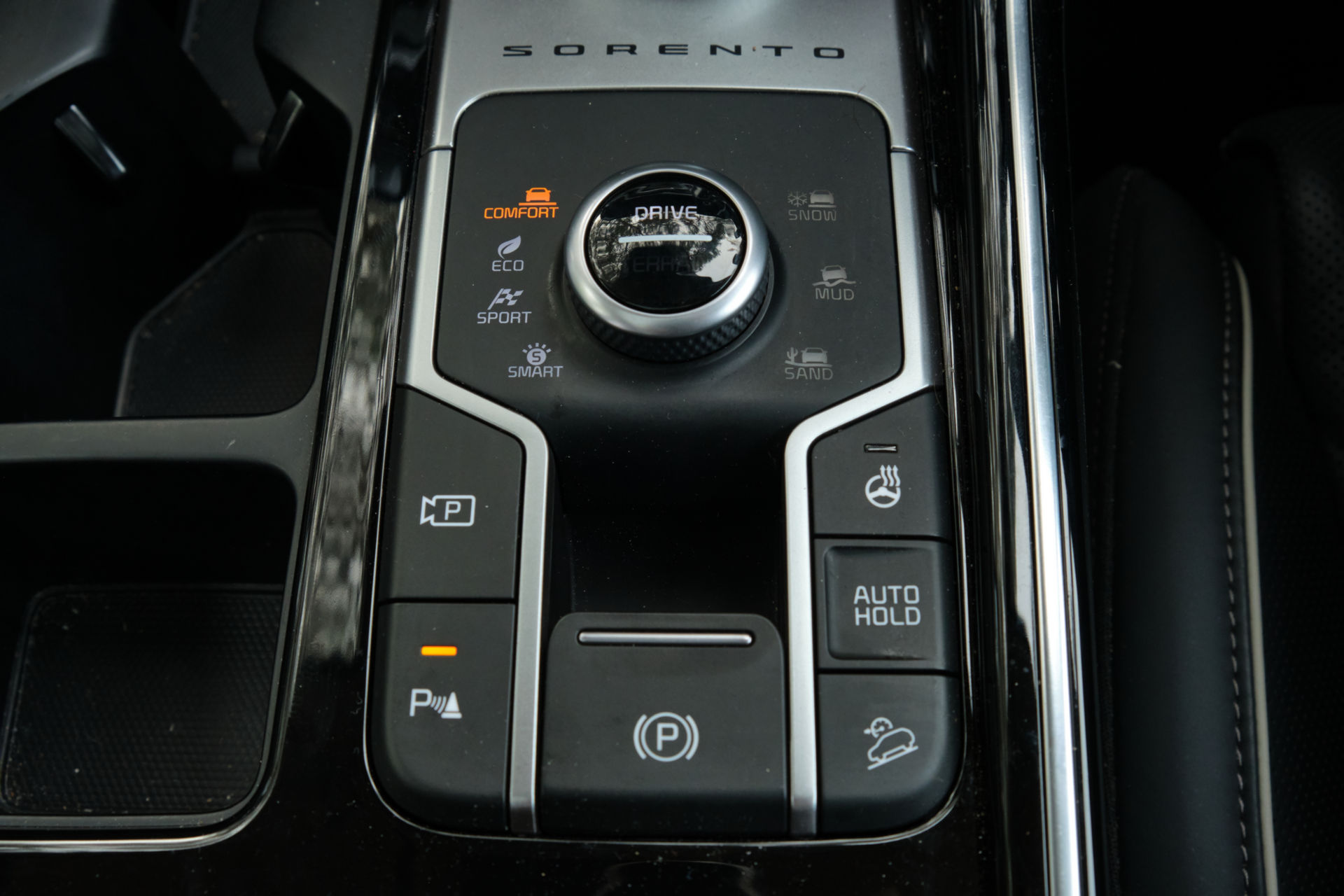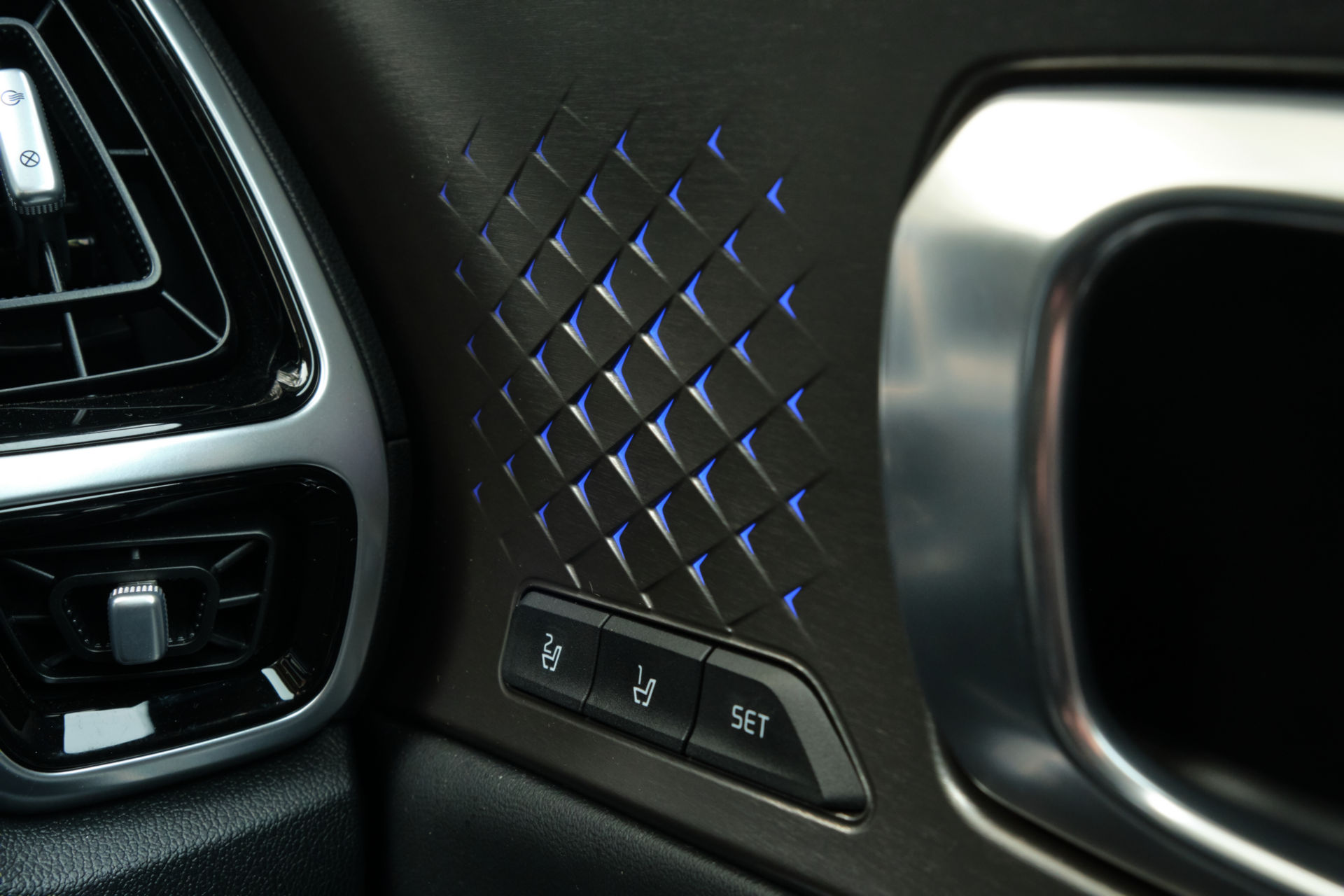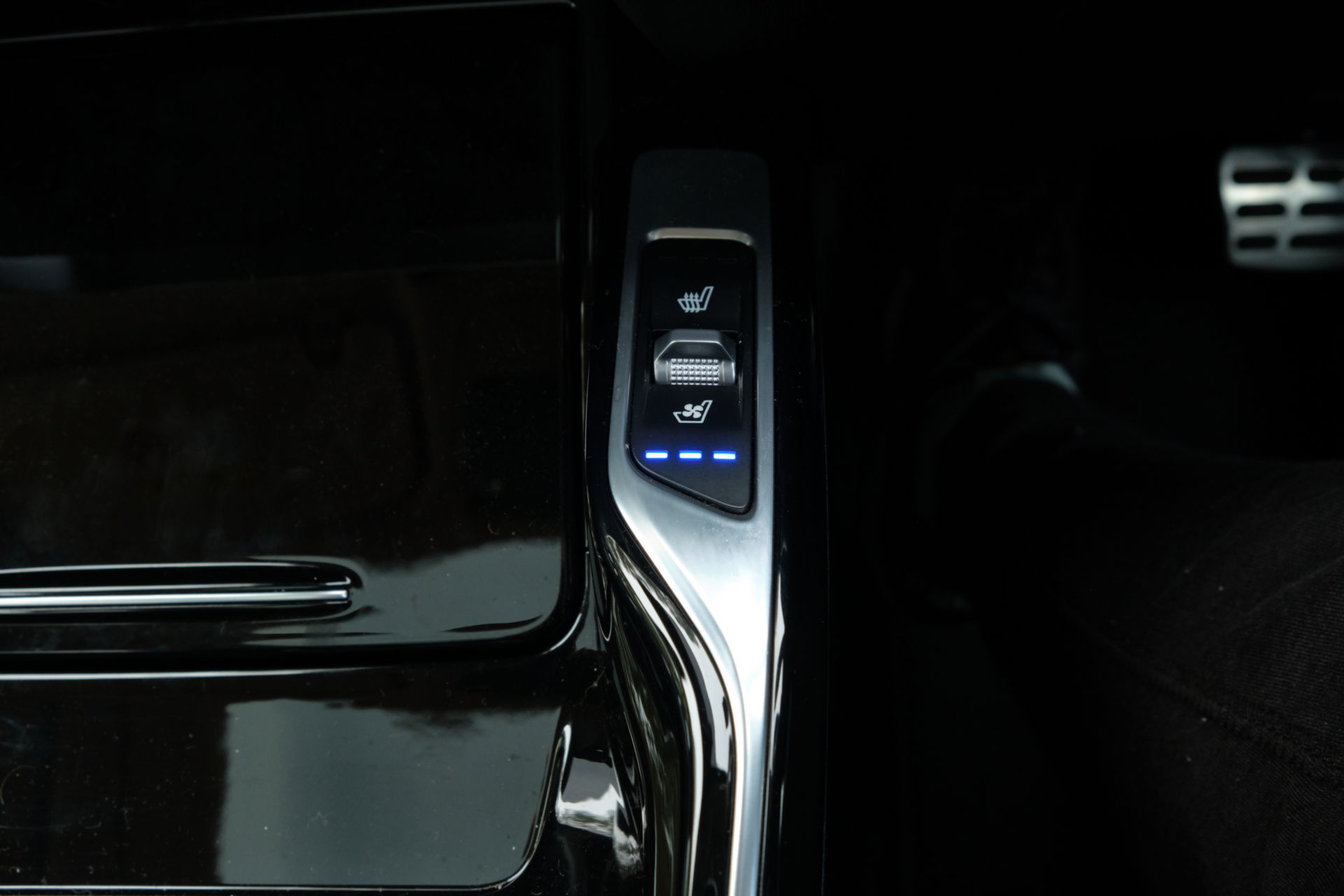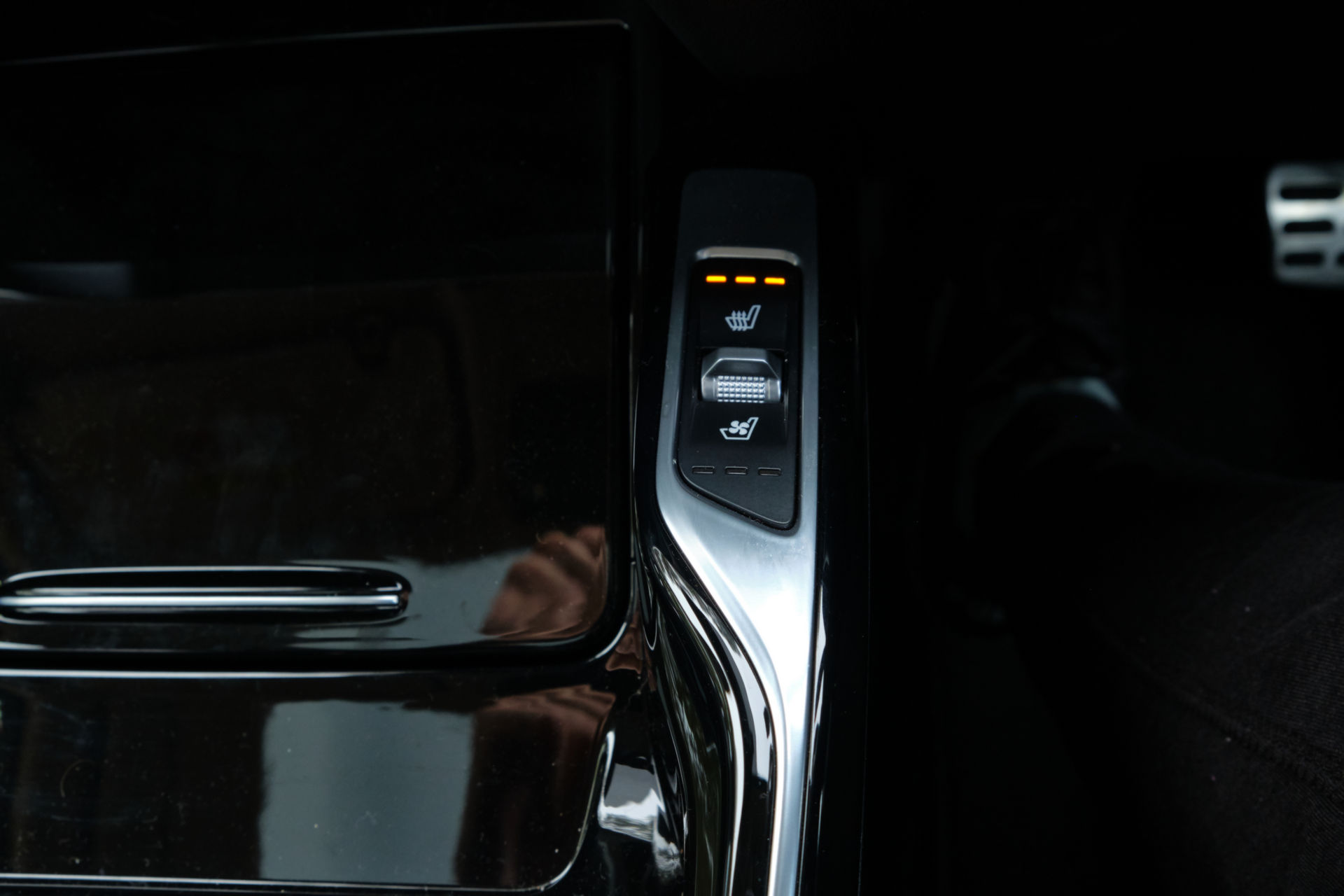Kia stunned many when it unveiled the new-generation Sorento last year and during our first drive of the SUV in the U.S., we were left very impressed. Fast forward to the middle of 2021 and we’ve now had the chance to spend a week with the 2021 Sorento, albeit this time in Australia.
In the U.S., we tested the flagship Sorento XE Prestige X-Line, equipped with body cladding to give it a more rugged appearance. The Sorento range is a little different in Australia where we tested it in GT-Line Diesel form, which is roughly the equivalent of the XE Prestige but without the ‘X-Line’ kit. It is currently priced at AU$67,290 (US$50,587).
Conservative Kia is no more
It is impossible to talk about the new Sorento without discussing its design. Long gone are the days when Kia models had conservative days and instead, the South Korean car manufacturer churns out vehicles that look bold, both inside and out. The first thing that strikes you with the new Sorento is the front end, fitted as standard with a blacked-out tiger-nose grille, aggressive headlights, and sleek LED daytime running lights.
Whereas the previous generation had a flowing design and curvaceous lines, the new Sorento is dominated by straight lines and sharp angles, really making it stand out. This is especially apparent at the rear where there are vertical taillights, a roof spoiler, and a creased tailgate. As a means of making a statement, this is certainly one way to do it.
A diesel that ticks all the boxes
In Australia, the 2021 Sorento can be purchased with either a 3.5-liter petrol V6 producing 268 hp (200 kW) and 245 lb-ft (332 Nm) of torque or a 2.2-liter CRDI turbodiesel with 198 hp (148 kW) at 3,800 rpm and 325 lb-ft (440 Nm) between 1,750 and 2,750 rpm. The latter is by far the most popular option Down Under. All diesel models come exclusively with an eight-speed wet dual-clutch transmission driving all four wheels while the petrol models have an eight-speed automatic.
The first thing we have to applaud Kia for is just how well it has done at keeping this engine quiet. While the basic 2.2-liter CRDI has been around for a number of years, the automaker has progressively improved it to the point where it is now very refined and for the most part, doesn’t feel or sound like a diesel. Sure, if you open up the hood with the engine running, there’s no doubting that it is a diesel but from behind the wheel, it’s far less obvious.
A number of changes have been made to this engine for the 2021 Sorento. For example, the block is now made from alloy rather than cast iron, saving 19.5 kg (43 lbs) of weight. Fuel injector pressure has also been boosted and when coupled to the new eight-speed dual-clutch gearbox, it certainly feels a little peppier than older Hyundai and Kia models with the same engine.
It is also very efficient, with Kia quoting a claimed 6.1l/100 km (38.5 U.S. MPG) on the combined cycle. On a road trip during a rainy Saturday and along a mix of highways and open country roads, we averaged 7.0l/100 km (33.6 U.S. MPG). That figure eventually rose to 8.2l/100 km (28.6 U.S. MPG) when combined with some urban, inner-city driving.
A comfortable and composed ride
We’re glad that a growing number of Kia and Hyundai models are using the new eight-speed dual-clutch transmission as it is a marked improvement over the old eight-speed torque converter. It’s not the best dual-clutch on the market and does have some hesitancy at low speeds but when you’re up and running, it provides smooth and fast shifts.
Underpinning the latest-generation Kia Sorento is the updated N3 platform and it adds a premium feel that the old model simply couldn’t match. The ride is great as it soaks up imperfections in the road very well and when you want to drive in a slightly sportier manner, the Sorento GT-Line is happy to oblige.
The new Sorento could be considered as a ‘soft off-roader’ and comes with some features that reflect this, such as Snow, Mud, and Sand modes, as well as Hill Descent Control. With this in mind, we did take a little detour away from one of the major highways near Perth and headed through a simple off-road trail in the Dwellingup State Forest. The trail was relatively flat but did feature a number of water crossings that the Korean SUV passed through with ease.
Read More: The 2021 Kia Sorento Lands In The USA With PHEV, 281 HP Turbo And More Rugged X-Line Models
As I drove further into the forest, a brutal rain shower hit, turning parts of the gravel-lined trail into mud within just a few minutes. Not to worry. I simply enabled the Mud mode and the Sorento breezed through, even though its Continental PremiumContact6 tires aren’t really oriented to off-road driving.
A premium feel
The interior is also a huge improvement over the old model. Like the outside, it is dominated by straight lines, squares, and striking angles. We know some people that prefer the more European-style interior of the current Hyundai Santa Fe but we think the cabin of the Sorento suits the SUV very well.
Located directly in front of the steering wheel is a 12.0-inch digital gauge cluster with two prominent gauges that typically display speed and revs. Flick on your indicator, however, and the gauges will display a live image of your blind spot. It’s a feature found on other Hyundai, Kia, and Genesis models and it never gets old.
Elsewhere, the Sorento GT-Line comes standard with heated and ventilated front seats and heated outboard second-row seats. The driving position is good and there’s plenty of room in both the second- and third-row. One particularly nice inclusion is the large sunroof that stretches over the front two rows.
Many parts found in the cabin are made from aluminum, including the knurled shifter and Drive Mode selector. These touches help to add a premium feel to the SUV, as does the 64-color ambient lighting system that comes standard on the GT-Line.
In addition to enjoying an impressive amount of space, those sitting in the second- and third-row seats have access to USB ports and air vents. The third-row also includes a knob to adjust the fan speed.
One particularly neat feature of the 2021 Sorento GT-Line is the Remote Smart Parking Assist. The system is operated through the key fob and allows you to start the engine remotely before pressing buttons to either move the car forward or back out of a tight parking space or garage. While we suspect most Sorento owners will never or rarely use the feature, it is handy and during the multitude of times we used it, it worked flawlessly.
Competitive pricing for a competitive SUV
As mentioned, the Sorento GT-Line Diesel that we tested is currently available for AU$67,290 (US$50,587) including on-road costs. Meanwhile, the entry-level S Petrol with the eight-speed auto starts at AU$49,290 (US$37,055) with prices rising to AU$52,290 (US$39,310) for the S Diesel DCT, AU$52,290 (US$39,310) for the Sport Petrol Automatic, AU$55,290 (US$41,565) for the Sport Diesel DCT, AU$56,690 (US$42,698) and AU$59,690 (US$44,873) for the Sport Plus Petrol Automatic and Sport Plus Diesel DCT respectively, and climbing to AU$64,290 (US$48,331) for the GT-Line Petrol Automatic.
While some may initially be put off by the idea of spending almost AU$70,000 (US$52,624) on an SUV from Kia, we found the Sorento GT-Line Diesel to feel every bit of its starting price. It drives well, looks good, has a comfortable interior, and is loaded with all the safety and convenience features you could ever need.







